19 Best Things to do in Warsaw, Poland + 2 Day Warsaw Itinerary and map

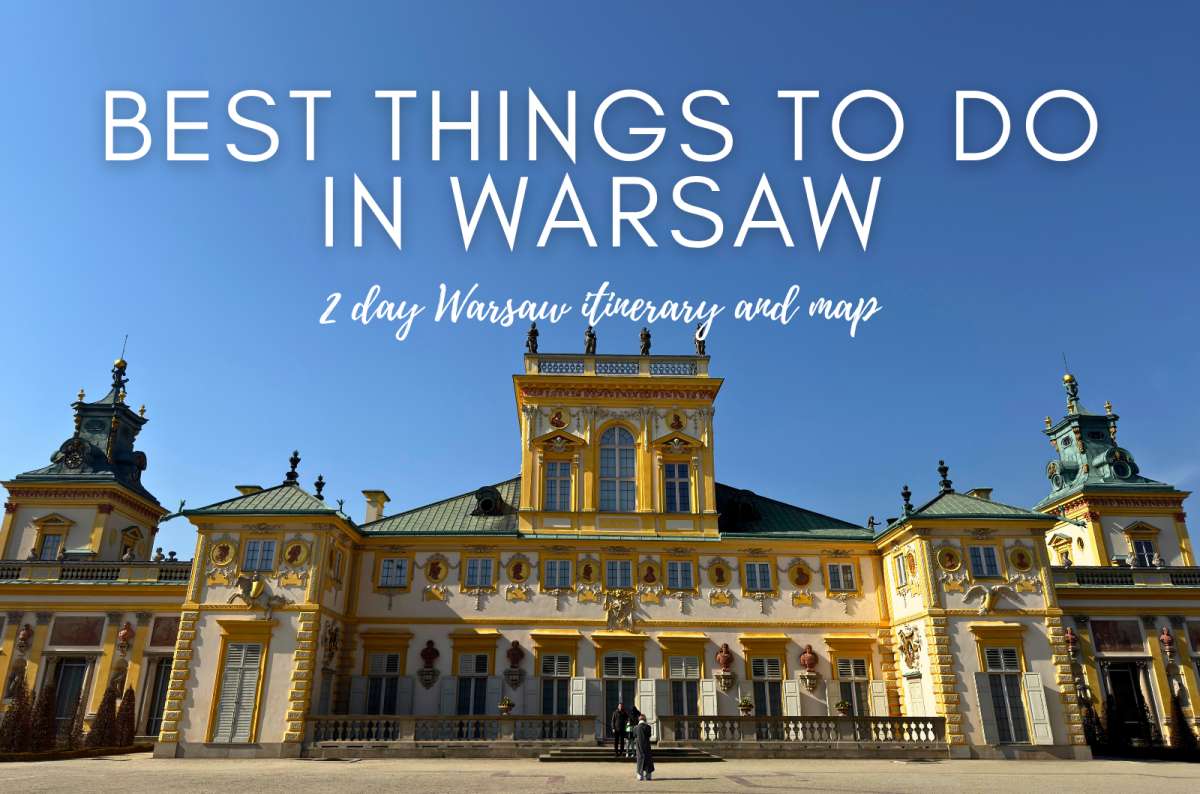
I missed many opportunities to visit Warsaw, the country's capital, but then in 2025, I had a grand Poland itinerary and visited for the first time for 4 days. I expected exactly nothing from Warsaw before planning my trip to Poland, but while planning, I started to plan more and more interesting things to do in Warsaw, Poland.
It went from "I don't know what to do in Warsaw and whether Warsaw is worth visiting?" to it's going to be the highlight of my Poland visit. It wasn't. Krakow was. But it was very, very good anyway.
Which other nation would name their capital so conveniently, Warsaw—I just can’t keep myself from dividing it into “War Saw", and it’s so fitting for Poland with its turbulent history.
Top Tip: Arguably, the city with the best traffic I’ve seen in Europe. Don't be afraid to visit by car.
It took me a while to wrap my head around and make a fair list of the best attractions in Warsaw. I also included the most logical 2-day Warsaw itinerary plan + a map to make your life easier. I spent 4 days in Warsaw, but I could do it in 2 days, no problem.
Read more from my Poland travel blog.
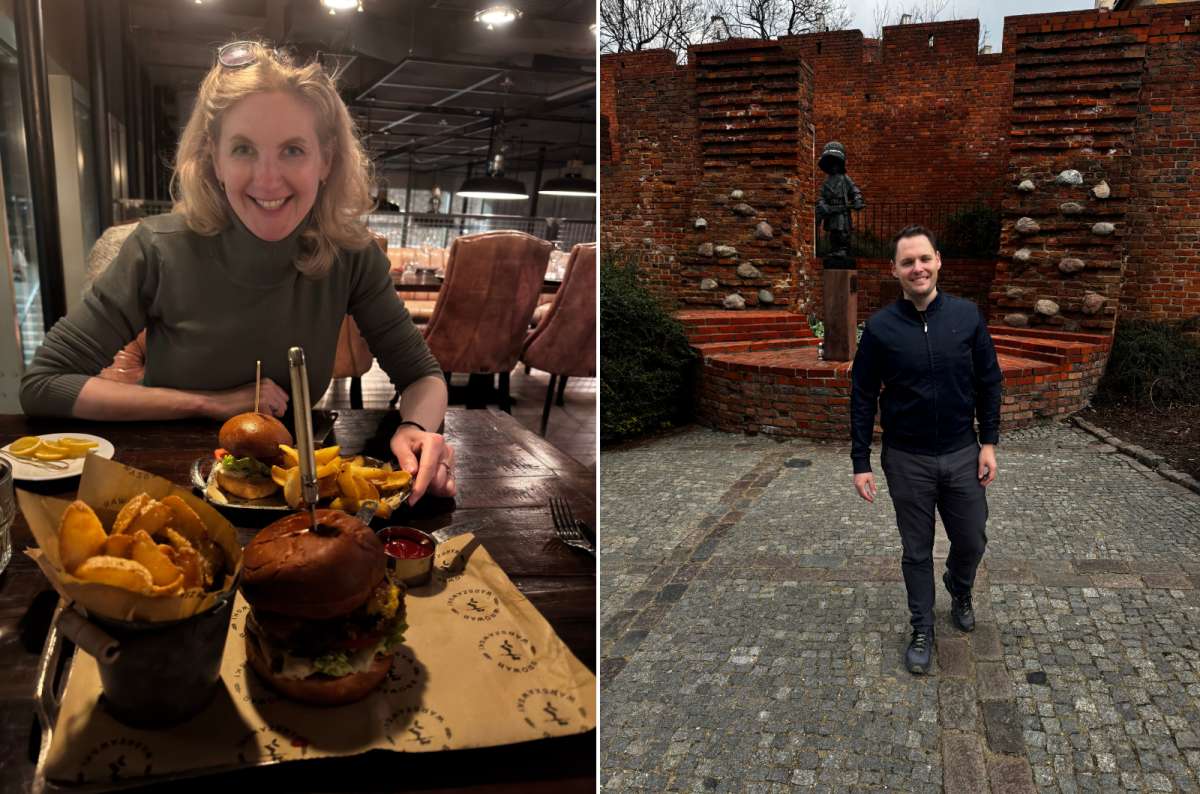
Warsaw, you better be ready for us
Here we go..
My ranking of the best 19 things to do in Warsaw, Poland
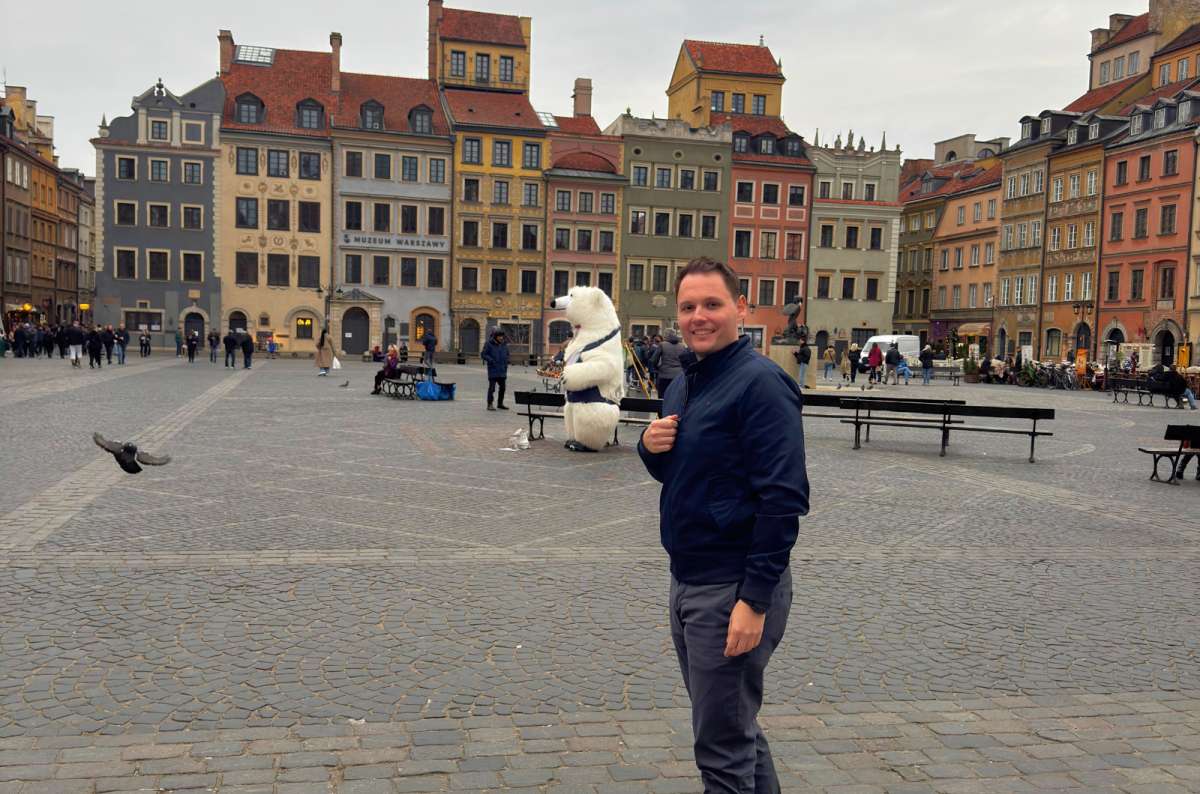
Wandering through Warsaw’s Old Town Market Square—colorful, lively, and full of history
- Warsaw Uprising Museum
- POLIN – Museum of Polish Jews (Monument of Ghetto Heroes)
- Museum of Warsaw
- Wilanów Palace and Gardens
- Royal palace and Castle square
- Little Insurgent Monument
- Palace of Culture and Science
- Copernicus Science Center
- Lazienski park
- Holy Cross Church (Chopin Heart)
- ArcCathedral of St. John
- Living Under Communism Museum (Muzeum Życia w PRL)
- Syrenka Square (Old Town Square)
- Barbakan (City Walls)
- Museum of Geology
- Warsaw Citadel (and Katyń Museum, Polish Army Museum)
- Pawiak Prison Museum
- Fort Legionowo/Warsaw Monument
- Fryderyk Chopin museum
As you can see, I made my list based on my experience, not modified by any "wanna be" blogger. You are not visiting Warsaw for its rich history; there is no more standing history. Truly, the best things to do in Warsaw and what you should expect are world-class quality museums and a rebuilt city centre.
Even though everything was destroyed, Warsaw made its way to the UNESCO World Heritage Site list.
Sometimes, all you need to do is take the first step... I've filtered out the best hotels in Warsaw for you
Save it for yourself to come back to later, or share with your friends on social media!
Where to stay while visiting Warsaw
I have a love–hate relationship with this hotel.

Radisson Collection Warsaw—where breakfast is divine, sleep is blissful, and the elevator has a personality of its own
What I loved about Radisson
I really liked the breakfast, the service was fine, the rooms were dark for sleeping, and there is a great fitness center for a hotel.
What I Hated
Cleaning wasn't up to the price point. The pool was small and absolutely overcrowded, and it was quite cold. Parking was expensive, considering street parking was free. And the elevator became my arch nemesis—taking me for a hotel round-trip every time I tried to go anywhere. It took like 10 minutes to get between floors.
Would I stay again? Probably yes.
The best things to do in Warsaw, Poland: Ultimate 2-day itinerary Warsaw
If you have only 2 days to visit Warsaw, I have put together this 2-day Warsaw Itinerary in the most efficient way, and it more or less resembles my own itinerary, which I upgraded after making some mistakes.
Day 1—History, Resilience & the Old Town
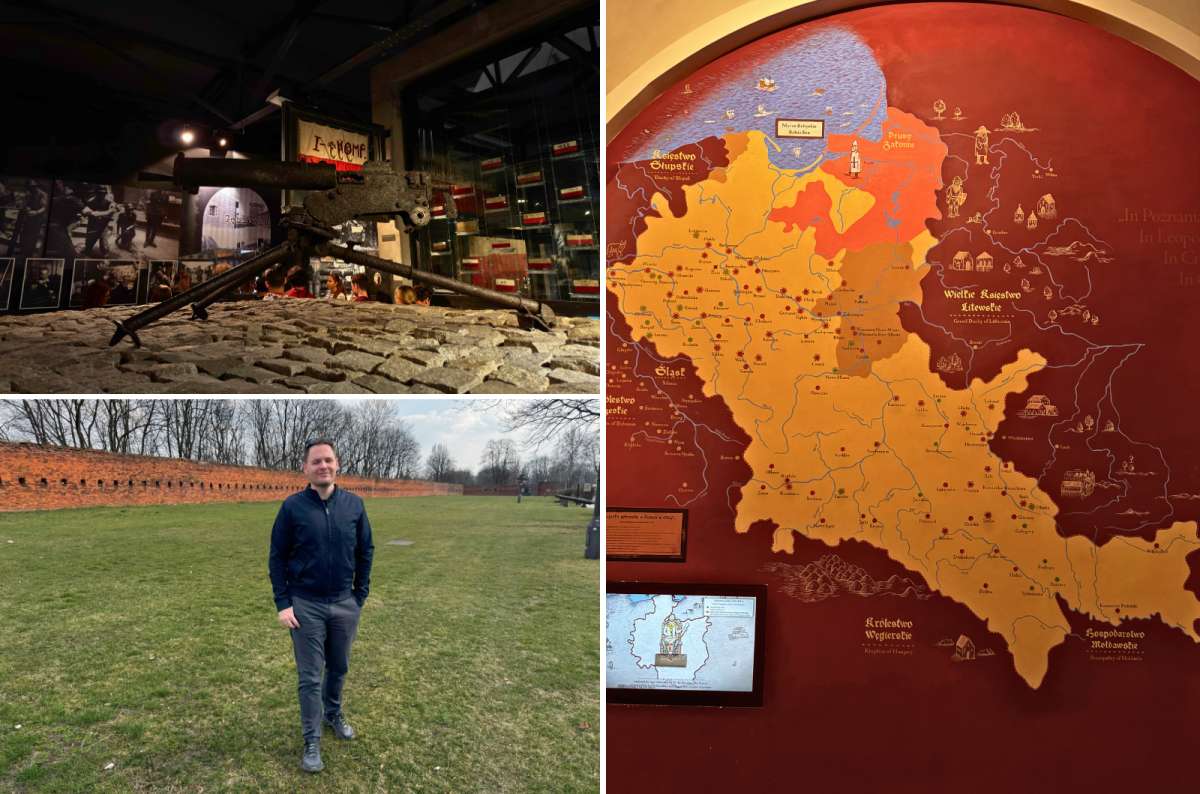
From WWII sites to Warsaw’s Royal Castle—follow my two-day Warsaw itinerary and uncover the city’s powerful history and timeless charm
Morning—WWII & Jewish Heritage
Stop 1: Warsaw Uprising Museum—Start early to avoid crowds (1.5–2 hrs).
Stop 2: Pawiak Prison Museum—Small but powerful WWII site nearby (30–45 min).
Stop 3: POLIN Museum of the History of Polish Jews—Continue the historical thread and visit the Ghetto Heroes Monument just in front (2 hrs).
Afternoon—Central Warsaw
Stop 4: Royal Castle & Castle Square—Begin your Old Town exploration here (1 hr).
Stop 5: St. John’s Archcathedral—Just behind the castle (15 min).
Stop 6: Little Insurgent Monument—Along the old city walls (10 min).
Stop 7: Barbican & City Walls—Continue your stroll into the northern gate area (20 min).
Stop 8: Syrenka Square (Old Town Market Square)—Lunch or coffee in the square.
Stop 9: Museum of Warsaw—Right on the square, perfect post-lunch (1–1.5 hrs).
Evening—Classic Warsaw Atmosphere
Stop 10: Holy Cross Church—Stop to see Chopin’s heart on your way back down Krakowskie Przedmieście.
Stop 11: Fryderyk Chopin Museum—Close by; visit before closing (1 hr).
Day 2—Palaces, Parks & Modern Warsaw
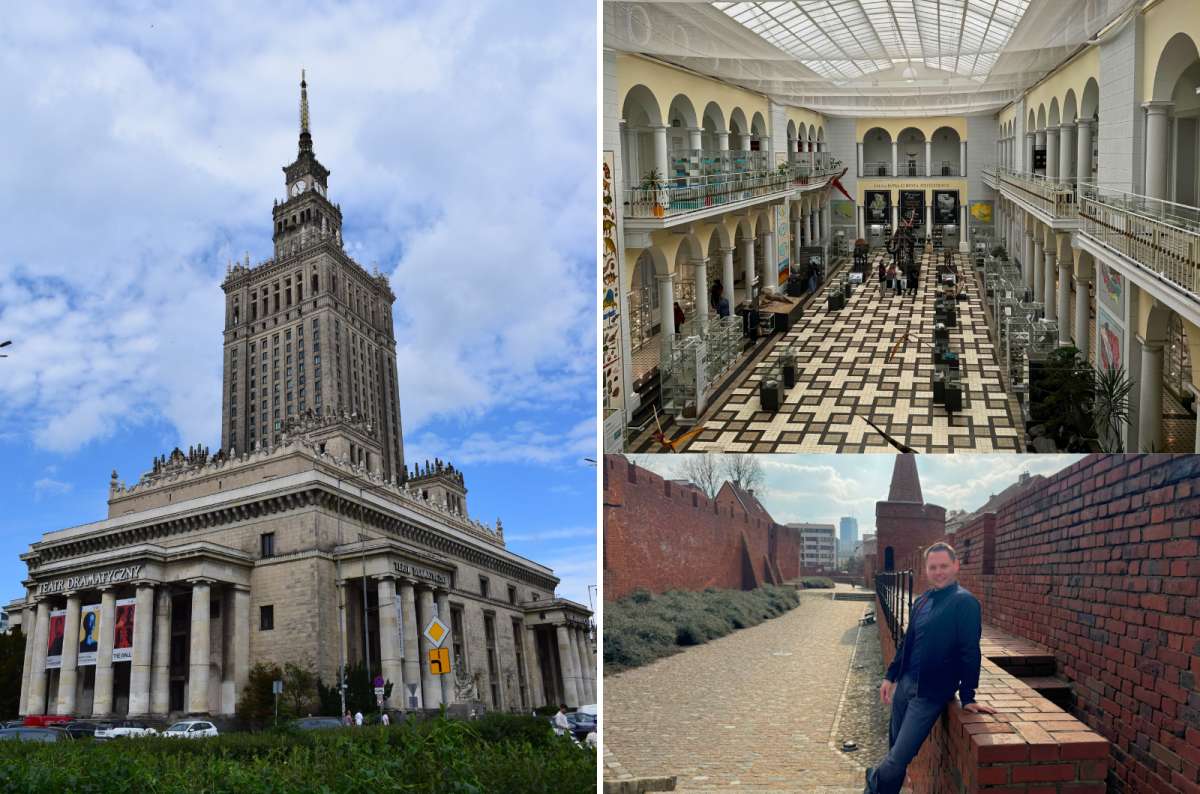
From science to history—exploring Warsaw’s iconic Palace of Culture, Geological Museum, and old city walls
Morning—Royal & Natural Side
Stop 1: Łazienki Park—Arrive early for calm walks (2–3 hrs).
• Don’t miss: Palace on the Isle, Chopin Monument, Amphitheatre, and Orangery.
Stop 2: Ujazdowski Palace—Contemporary art stop on your way out (30–45 min).
Stop 3: Museum of Geology—Nearby and compact (30 min).
Afternoon—South Warsaw & Science
Stop 4: Wilanów Palace and Gardens—Explore the royal residence and park (2 hrs).
Stop 5: Palace of Culture and Science—Observation deck and quick look inside (1–1.5 hrs).
Stop 6: Living Under Communism Museum (Muzeum Życia w PRL)—Fun and nostalgic contrast (45 min).
Stop 7: Warsaw Citadel Complex—Visit the Polish Army Museum, Katyń Museum, and nearby Fort Legionów if time allows (2 hrs).
Stop 8: Copernicus Science Centre—Great late stop; open till evening (2–3 hrs).
Map of Warsaw attractions
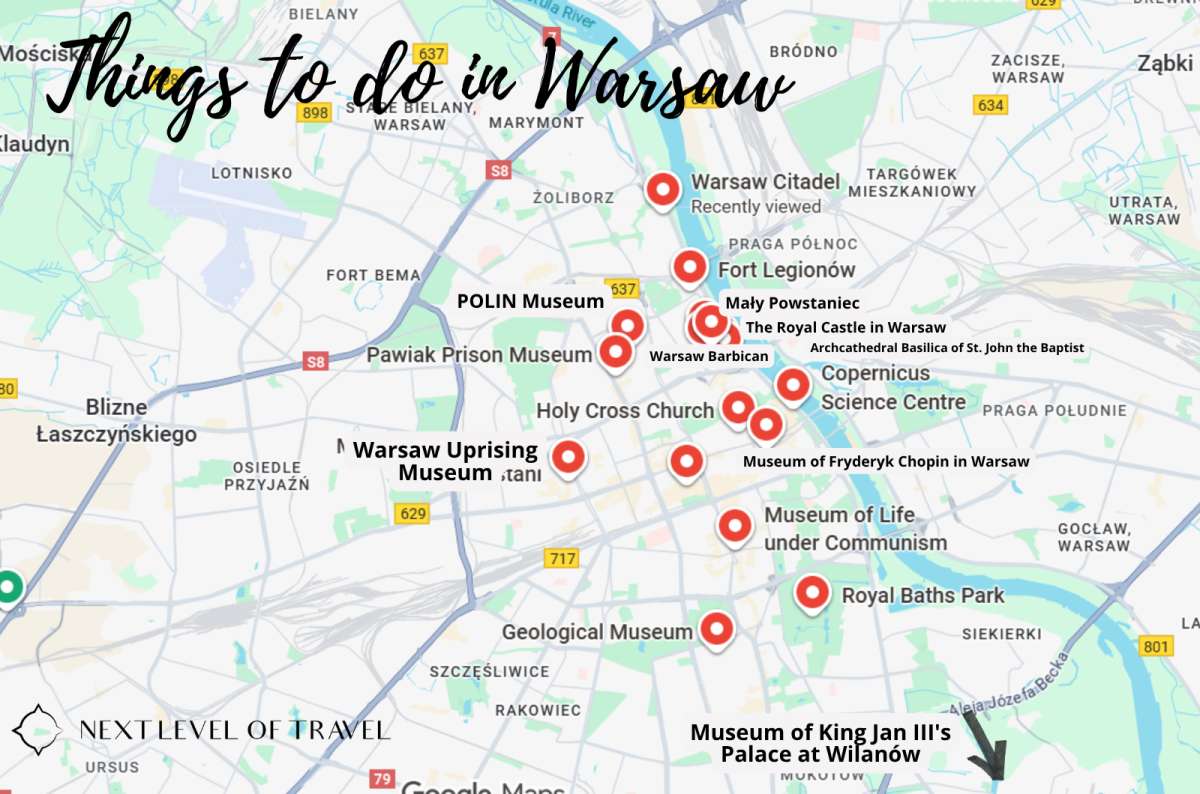
Here’s a map of the best things to do in Warsaw—from royal palaces to powerful WWII museums
1. Warsaw Uprising Museum
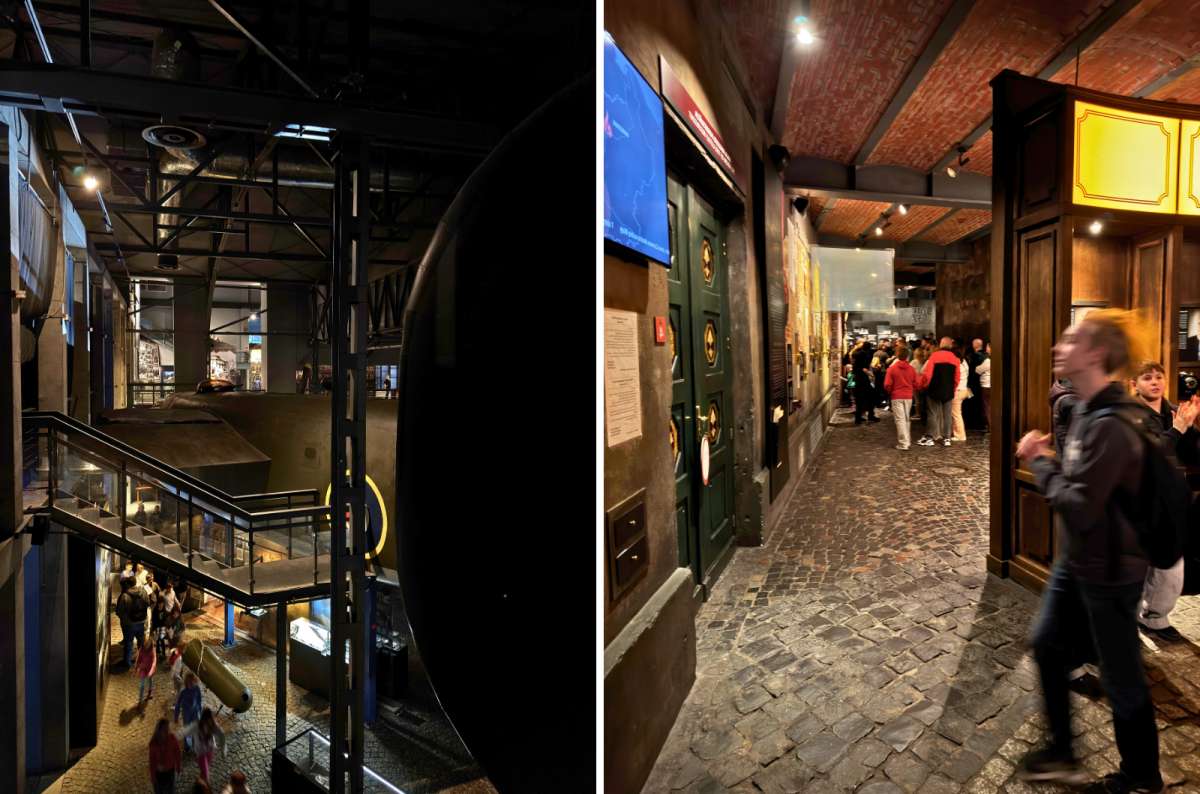
The Warsaw Uprising Museum—Poland’s top WWII site and one of the most impressive museums I’ve ever visited. Interactive, powerful, and unforgettable
Visitor info: Tickets cost 35 zl and there are a lot of opportunities to park for free around.
It’s a surprisingly big building dedicated to the Warsaw Uprising, right in the middle of the commercial part of the city. It must be important.
For me, it is by far numero uno of the best things to do in Warsaw, Poland.
First impressions visiting the Warsaw Uprising Museum
The design of the museum is not super nice, unlike other places in Poland, but once you step inside, it’s a completely different story. I was taken aback by how interactive and superbly multimedia the museum is—it felt like entering an attraction in Disney World. The presentation is so good that I consider it among the best museums I’ve seen.
What you’ll find inside
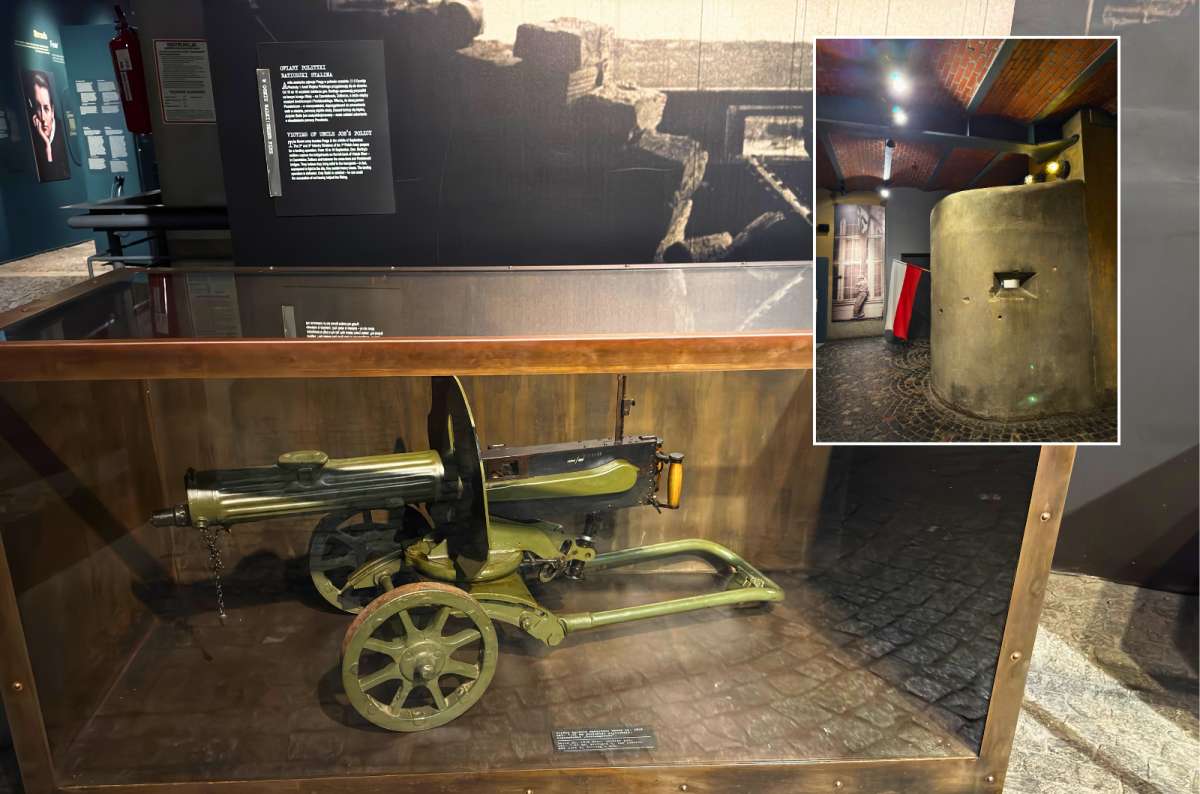
Detailed exhibits at the Warsaw Uprising Museum bring WWII history to life—from weapons to wartime bunkers
It’s very nicely organized in a timeline pattern, telling the story of how the Soviets never helped where they should have and how the Germans purposefully destroyed 95% of all the historical buildings in Warsaw. It’s also a story of unequal odds that played out as they usually do—in favor of those who have odds on their side. In this case, the Germans.
It’s one of the most important events in modern Polish history, preceding the destruction of Warsaw and showing how twisted both the Soviets and Nazi Germany were. The worst part is that the uprising failed not because of the incapability of the insurgents, but because of the purposeful uncooperation of the Soviets. I can understand, after the visit, why most Poles can’t stand Russians.
Though it felt like a museum of WW2 from the perspective of Poland, I liked the attention to detail and how the facts are presented in an extremely appealing way. From the second floor, you can see how the whole museum is structured like wartime Warsaw—looking at the “streets” from the windows is just brilliant.
Oh, and there’s a huge bomber in the building as well. As if there weren’t enough artifacts, they said, “Great idea, let’s put a bomber in there too.”
What not to miss
Don’t skip the item stories section; they’re probably the best part of the museum.
Don't miss the Germans section, as it gives you the German point of view and what they most likely thought.
Fun Fact: There was a standing order to kill all the Warsawians—they managed to kill 250,000.
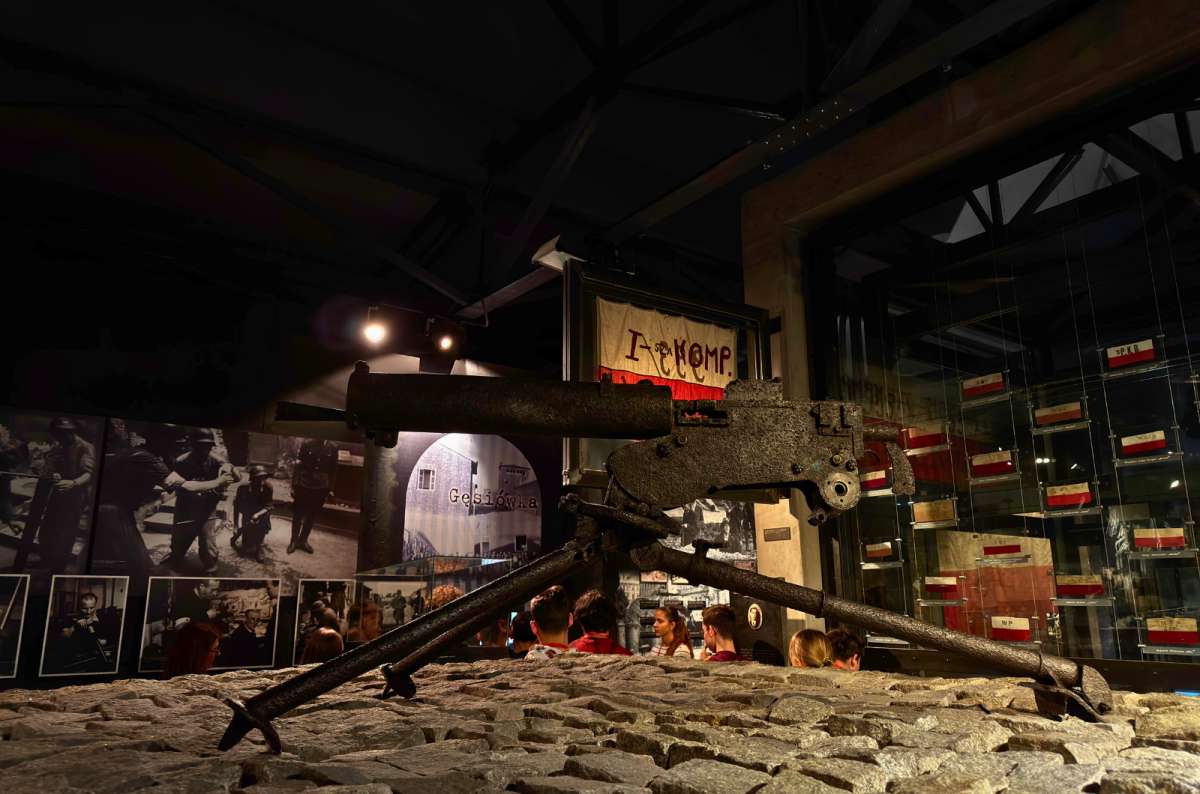
A rusted machine gun frozen in time
Practical info
Come as early as possible; the museum gets packed. Set aside at least 90–120 minutes.
In short, the Warsaw Uprising Museum might not look extraordinary from the outside, but inside it delivers one of the most powerful, immersive, and emotionally charged experiences you can have in any museum anywhere in the world.
2. POLIN Museum of the History of Polish Jews
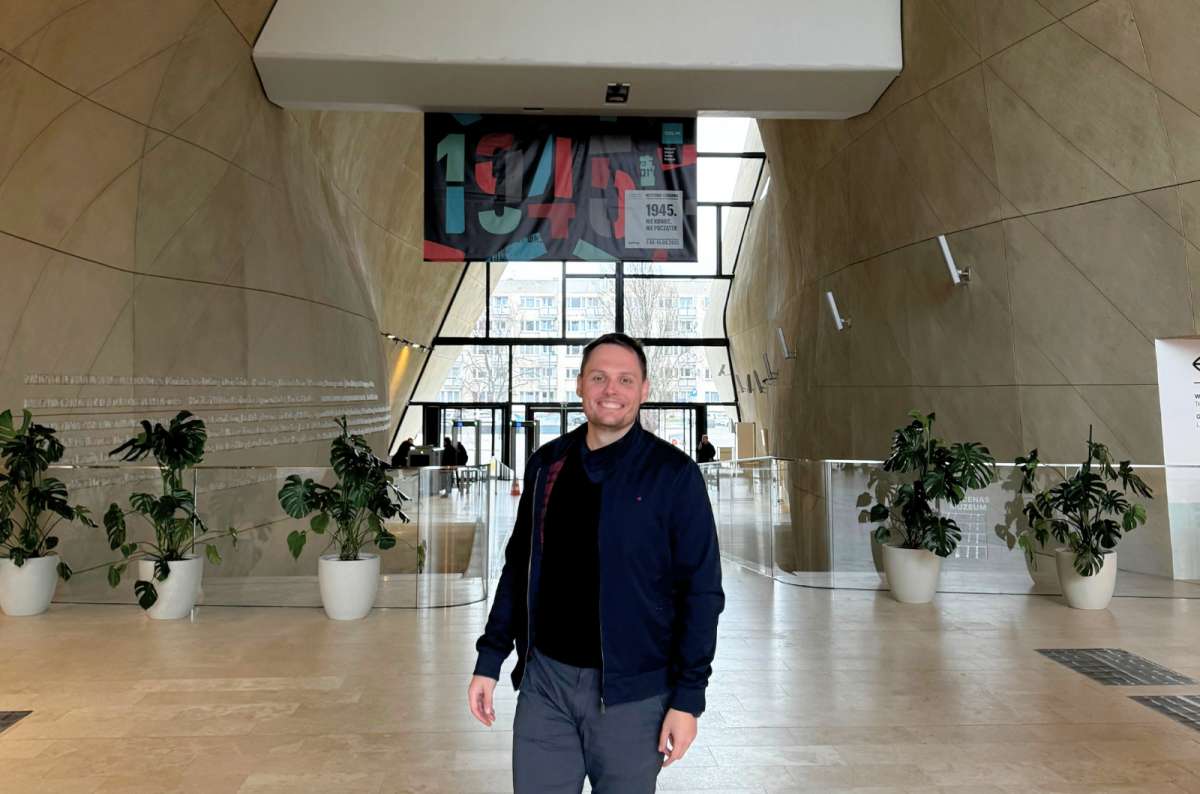
Inside the stunning POLIN Museum in Warsaw, where over a thousand years of Jewish history come to life through brilliant interactive storytelling
Visitor info: It costs 45 zl per person, and you can get an audio guide that works automatically and is superb.
Before I visited, I knew it had an interesting building, and I also knew that it was one of the most important museums in Warsaw.
The POLIN Museum stands in the heart of the Jewish Quarter, right on the site of the former Warsaw Ghetto.

In front of it, you’ll also find the famous Jewish Ghetto Heroes Monument.
The architecture of the building is really stunning—clearly inspired by Yad Vashem in Israel. I love it.
Fun fact: “Polin”—the name of the museum—also means Poland in Hebrew, and rest here. That’s why, according to legend, so many Jews stopped in Poland—they were merchants passing by.
The great museum itself is a modern, interactive gem. It’s so well organized, it’s almost unbelievable. I spent 2.5 hours here only because the museum was closing.
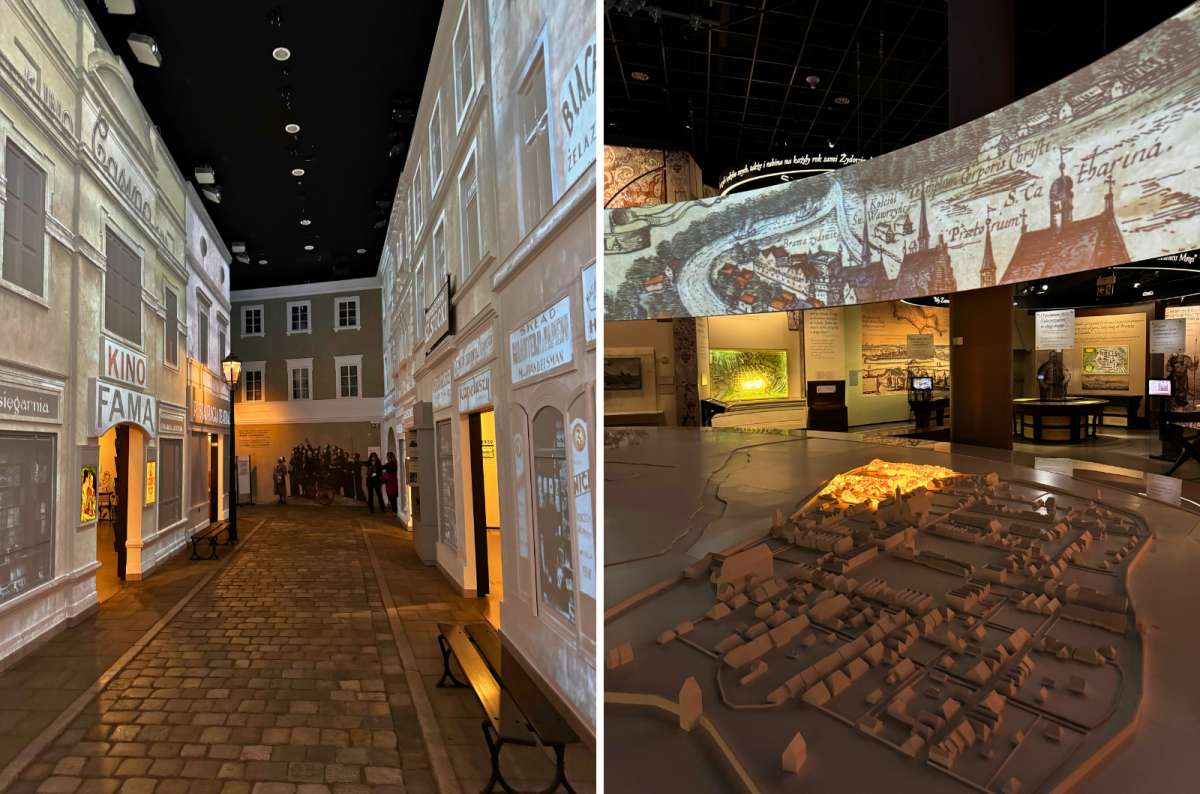
Immersive exhibits at the POLIN Museum recreate centuries of Jewish life in Poland with incredible detail and storytelling
What to expect inside of POLIN
The exhibition goes back over 1,000 years of Jewish life in Poland and doesn’t solely focus on the atrocities. Each section has its own vibe—medieval, Renaissance, well up to the 20th century.
It’s like an interactive tour through Jewish history, with beautifully curated exhibits, quotes from people of each era, and even period music.
I loved the ancient history and travel texts about how Jews got to Europe. It’s logical and fascinating to learn that they settled mainly in merchant cities because they were prohibited from owning land.
Funny that my home city, Prague, was once called the richest of those cities and a good place for Jewish people to live. Well, as it usually goes, they kicked Jews out.
Inside the museum, you can even see a full marketplace, homes, and an 18th-century synagogue to show what life was like. I especially liked the small printing presses you could try yourself.
I think if you are from Israel, this is a big chunk of your nation’s history and a must-visit. Even though I’ve been to Israel several times, this museum helped me understand Jewish history and identity better.
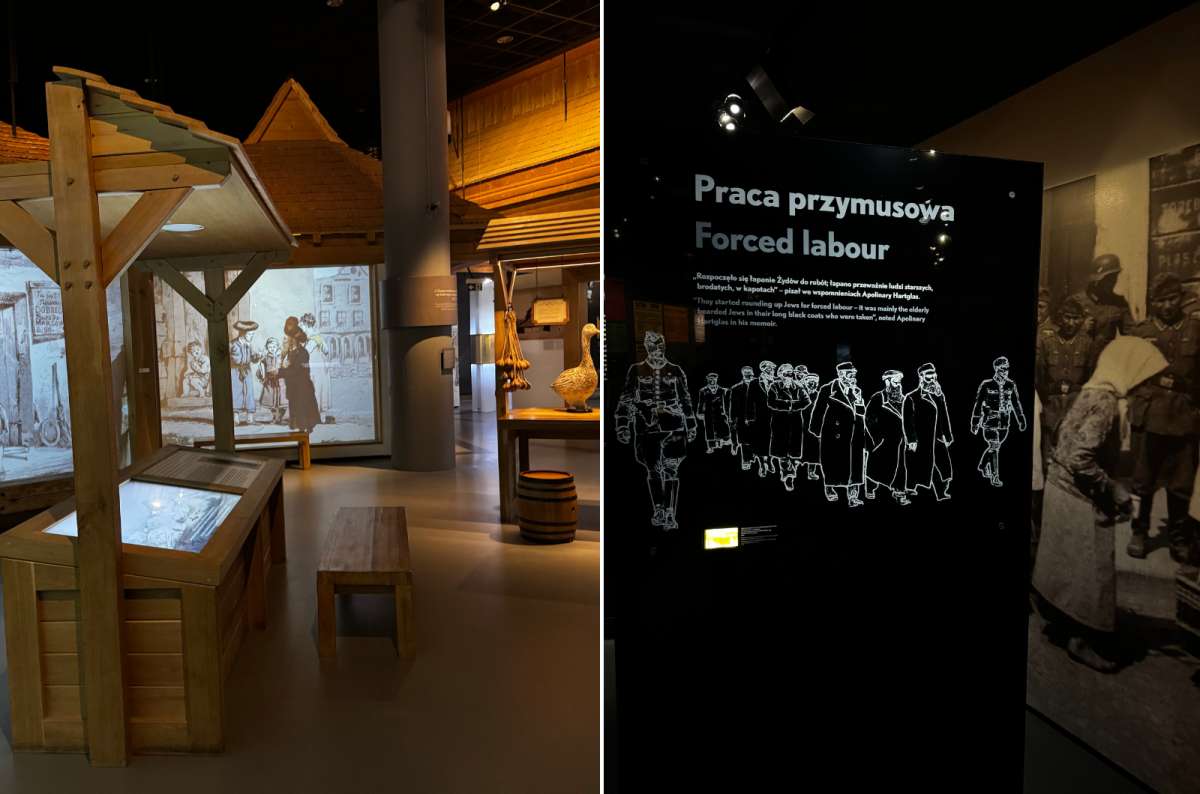
Walking through centuries of Jewish life in Poland
Is POLIN worth visiting?
It’s not an overly long or tearful museum—after two weeks in Poland, you’re happy for new information and a broader perspective. The museum is especially cool for children and families.
I kind of hurried through the WW2 and modern sections, so I must return one day, as I absolutely loved this museum.
Set aside at least 2 hours for the visit. My girlfriend is not much of a history buff, so she made it in 1 hour.
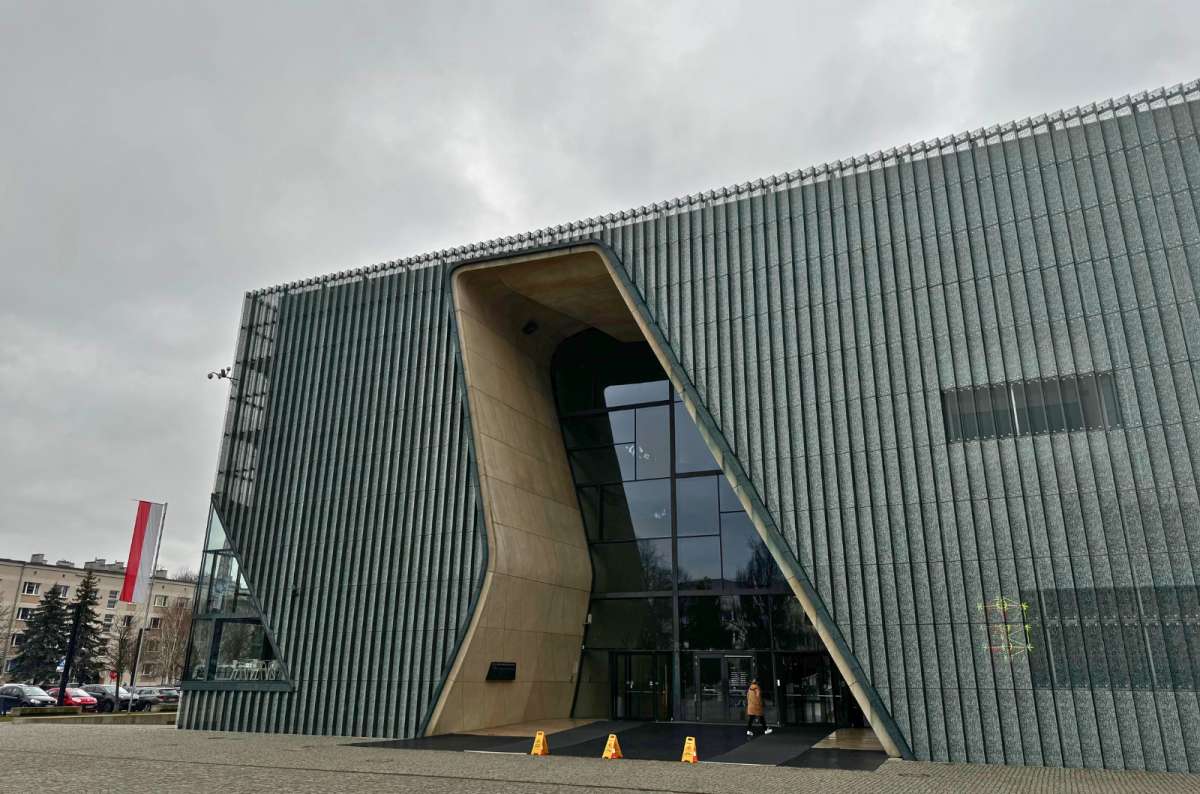
The stunning architecture of the POLIN Museum in Warsaw perfectly mirrors its mission—bridging Poland’s past with its living memory
3. Museum of Warsaw
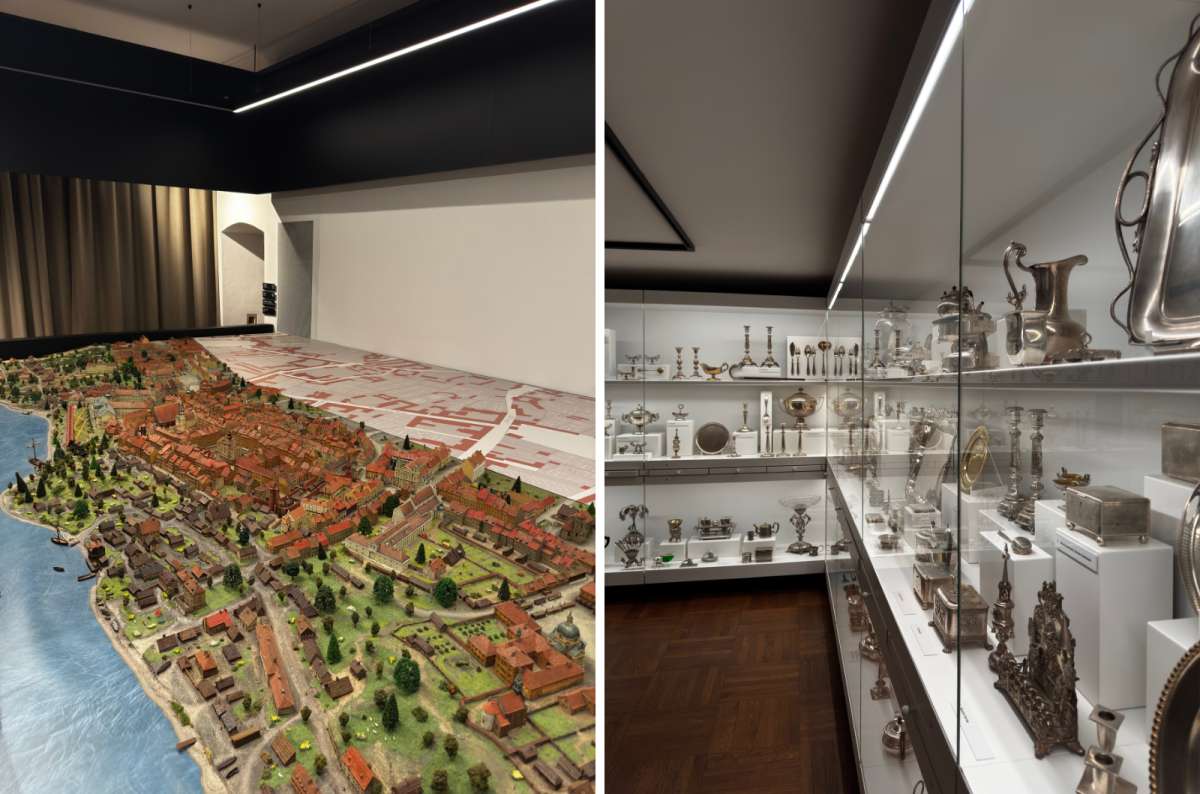
Inside the Museum of Warsaw, you’ll find everything from intricate city dioramas to centuries-old artifacts that tell the city’s story in fascinating detail
Visitor info: The museum will take you about one to two hours, and at 25 zl, it’s very cheap for what you get.
The museum is located in the "old" town market square in one of the new "old" buildings. The museum is basically a story of Warsaw.
Why did I like the Warsaw Museum?
The museum starts with statistics about the city, which is nice to learn to get a perspective. That's why I recommend visiting this museum as one of the first things to do in Warsaw—you will get a much better grasp of the city.
The museum itself is pretty big, spread over six floors with a viewing platform at the top. Unfortunately, the observation platform is not open-air.
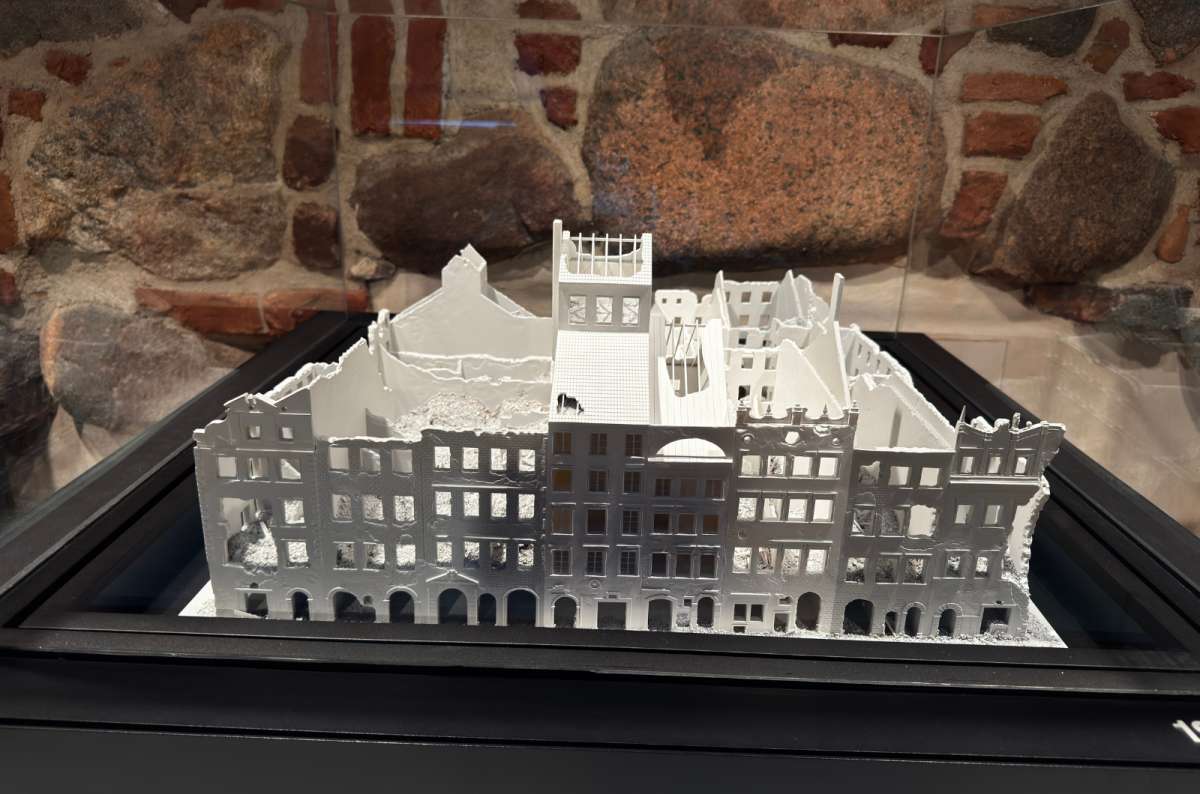
A miniature look at the devastation of Warsaw’s Old Town after WWII inside the Museum of Warsaw
Inside the museum
The museum starts with statistics and timelines. God, I love timelines and demography statistics. Such a great start—it couldn't be any better.
You will learn all about the population, building, and many more interesting, fun facts from the founding of Warsaw in the 1300s till the modern era.
Of course, there’s a part dedicated to the Warsaw Ghetto as well and the destruction of the city, so thorough that Poles briefly considered moving the capital to Łódź.
You can see many pictures that after the war, the city was simply gone. (Put the picture of Warsaw after the war.) Ninety percent of the Old Town was completely destroyed.
Fun Fact: I learned that the population density was more than ten times higher before the war in some districts.
Expect to see some serious cityscapes through contemporary paintings and a diorama of Warsaw. Dioramas are so cool. What's not to like about this museum?
There is also a bit duller archaeology part of the museum. Luckily, it's almost in the end, so you will be bored anyway.
Is the Museum of Warsaw worth visiting?
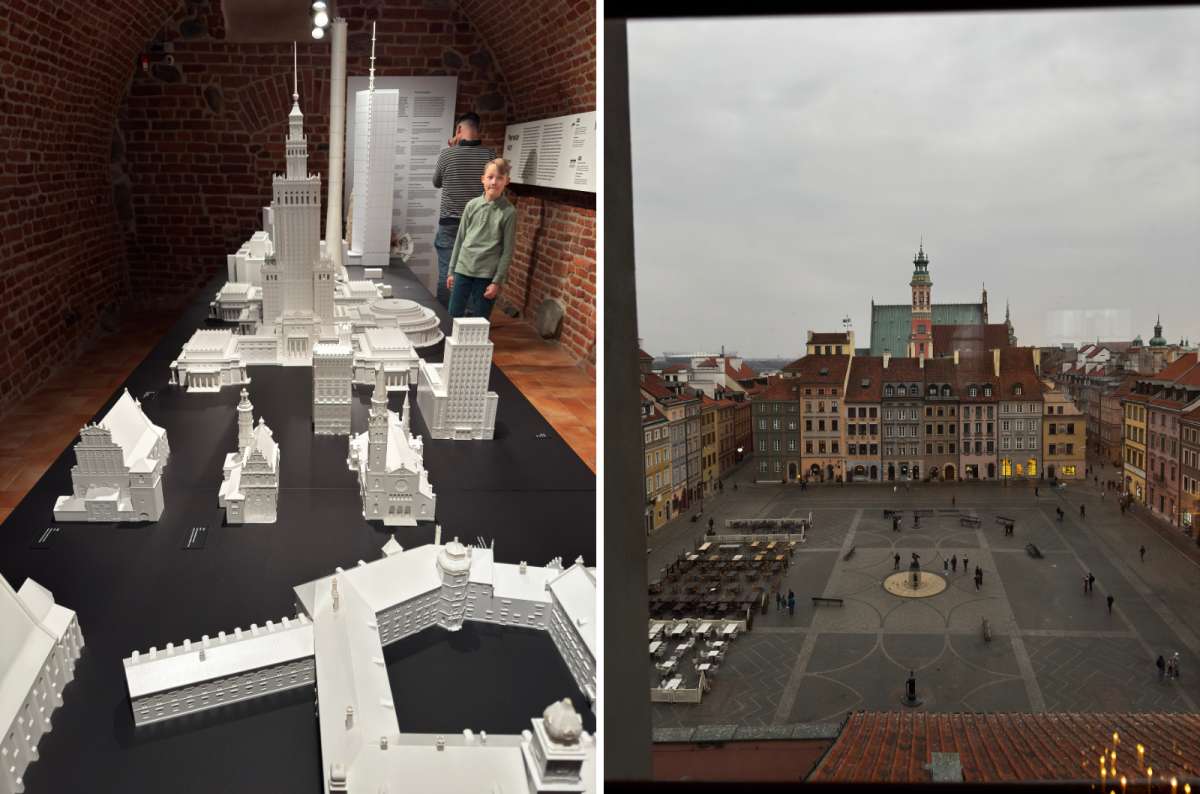
From miniature Warsaw to the real one outside the window
I honestly haven’t seen a similar museum before. It’s well-prepared, full of statistics and data, and easily one of the most interesting city museums I’ve visited.
Fun Fact: I loved the fact that mermaid is a Warsaw City Symbol, and it's not even a coastal city.
Another thing I really like about Warsaw’s historical center is that it’s quite small, walkable, and compact—which means it doesn’t get boring after endless hours of walking.
4. Wilanów Palace and Gardens
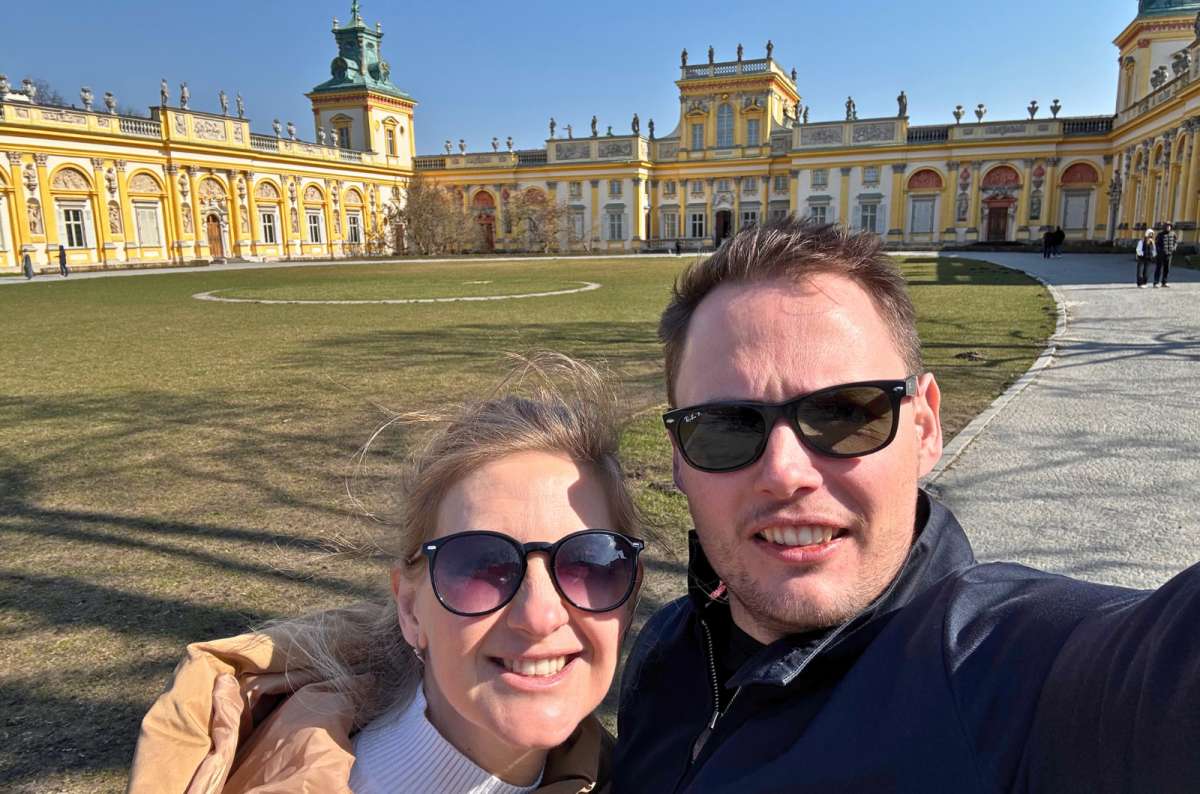
Visiting the stunning Wilanów Palace
Visitor info: You can park in a free parking lot just next to the palace, which is always a pleasant surprise.
You will enter the palace through the garden from the parking lot, and as I approached the Wilanow Palace, I knew I was in for a treat.
What to expect while visiting Wilanów Palace?
The palace itself has a golden façade and lovely painted decorations—a nice touch that gives it a unique character. It was built in the late 17th century for King Jan III Sobieski, the Polish hero who defeated the Ottomans at the Battle of Vienna in 1683. The palace was designed as his summer residence and is one of the few Warsaw monuments that survived World War II intact.
The garden in front of it is pretty small, but it’s beautifully kept and inspired by Baroque French and Italian styles. It costs 10 zl to enter, or you can visit the royal rooms filled with all the gold and silver of the usual royal interiors. It’s nice—nothing extraordinary, though. The palace style seemed comparable to Schönbrunn in Vienna or the Prussian palaces in Berlin, only on a smaller scale.
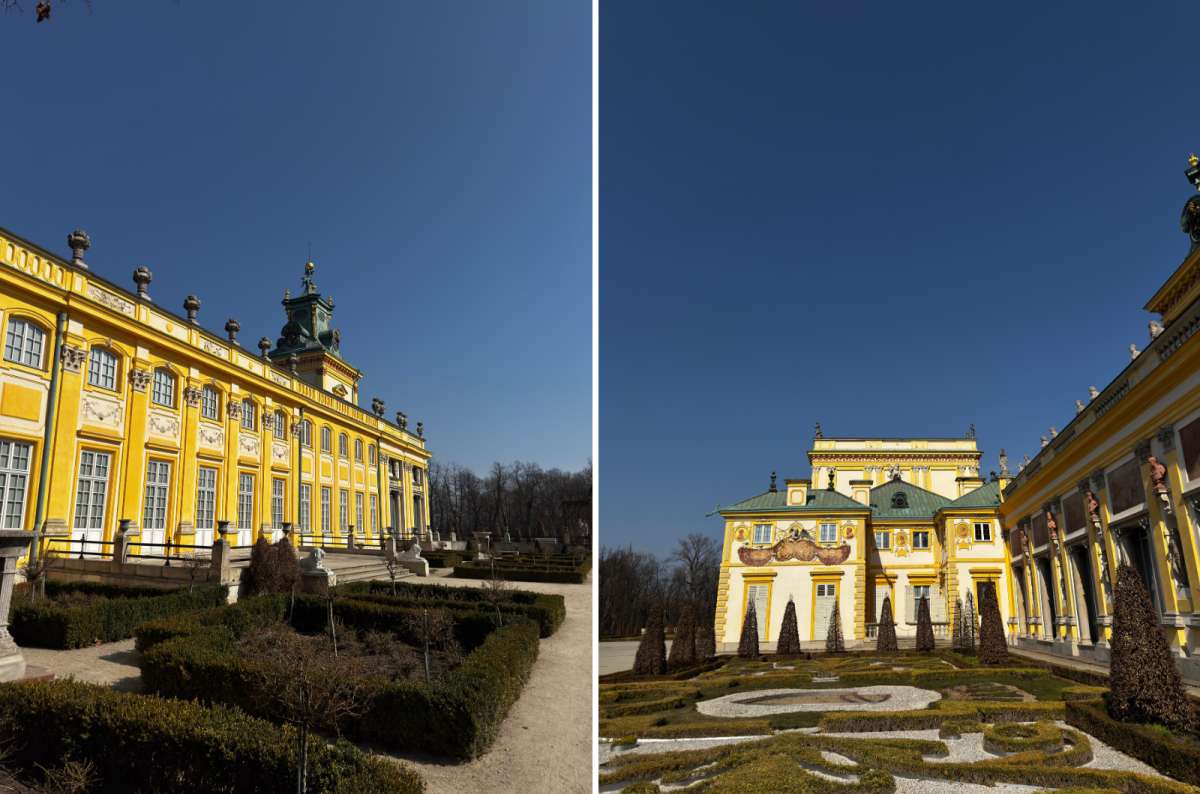
The golden façade and Baroque gardens of Wilanów Palace shine even brighter under the spring sun—one of Warsaw’s most elegant landmarks
While walking in the gardens, which are interesting by themselves, I found an unexpected stop at St. Ann Church. Of course, there was a mass while I visited, so no church for Jan.
Top Tip: If you have just two days in Warsaw, I would maybe skip the Wilanów Palace and gardens. They’re nice, but they’re far from the center—about 10 kilometers south of the Old Town—and there’s little to do or see besides the outdoors. The whole visit takes roughly 1.5 to 2 hours, including the gardens.
Then, moving slowly back toward the city center through Łazienki Park, you can make a nice half-day route connecting two of Warsaw’s most elegant green areas.
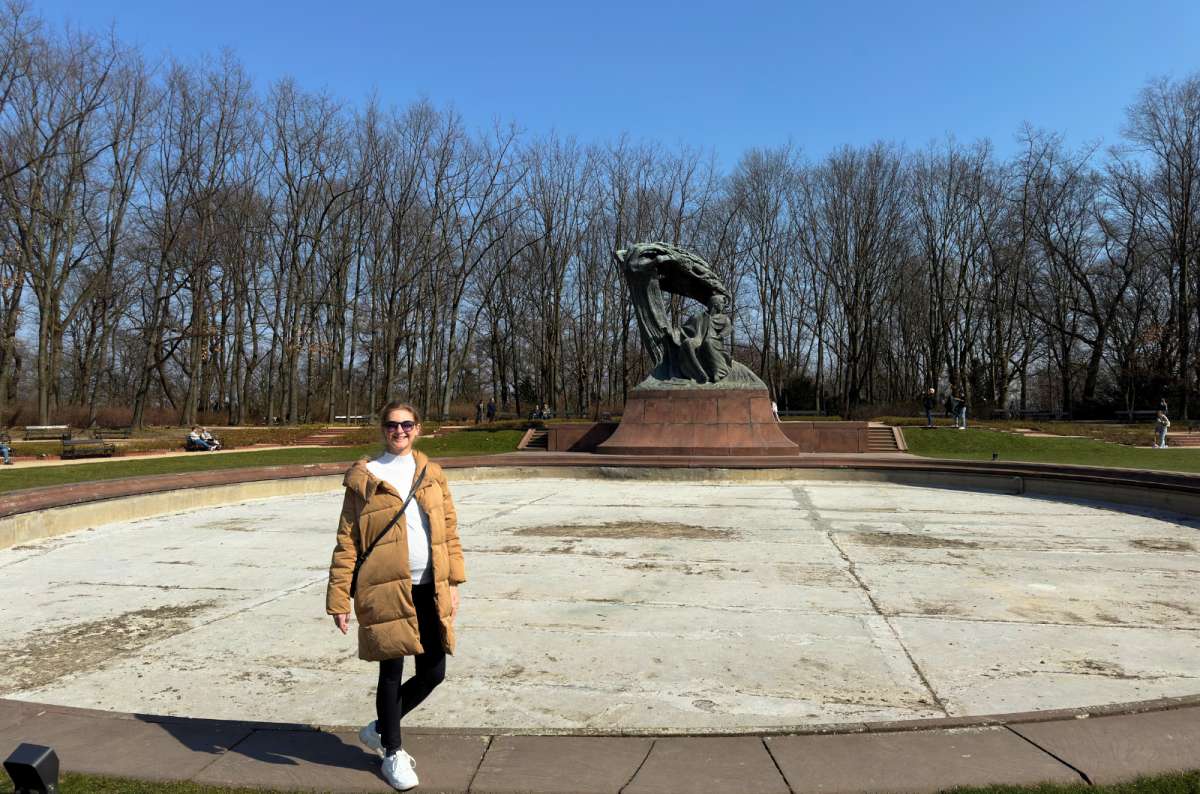
Enjoying a peaceful stroll through Łazienki Park in Warsaw
5. Royal Castle and Castle Square in Warsaw
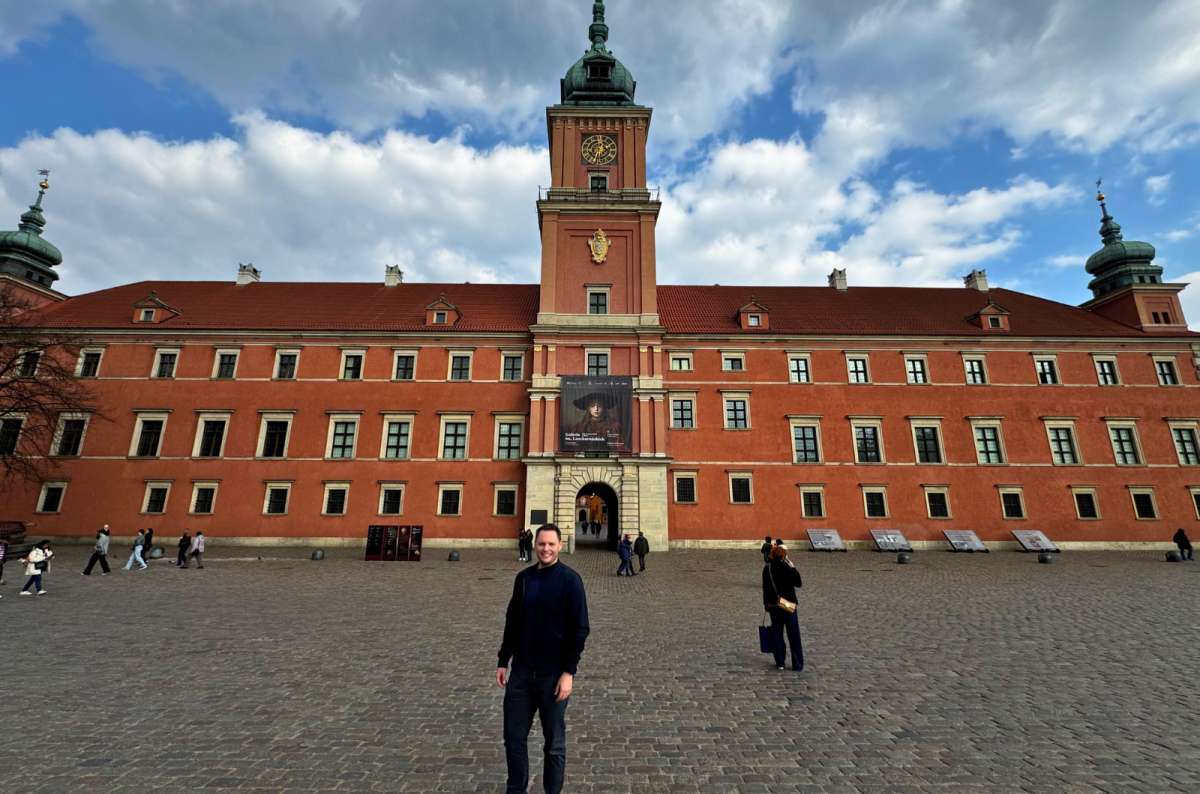
Visiting the Royal Castle in Warsaw—beautifully reconstructed after WWII, impressive in history if not quite in art for my taste
Visitor info: The tickets cost 60 zl—the most expensive ticket so far.
First things first. The tickets to the Royal Castle are pretty expensive. I liked the castle, but if you are not into art and old castle interiors, you can skip visiting the Royal Castle with peace of mind.
The castle is newly rebuilt, and I must admit it looks pretty normal to me. Still, it’s admirable that they managed to reconstruct it so faithfully after it was completely destroyed during World War II.
Don't forget to take: The automatic audio guide is again the unsung hero—this time even smarter, with a small camera that recognizes exhibits and tells you more about them.
As it goes with publicly owned places, expect various levels of service. Generally, Poles are pretty nice, but the ladies inside the castle, on the other hand, are outright rude.
Inside the castle
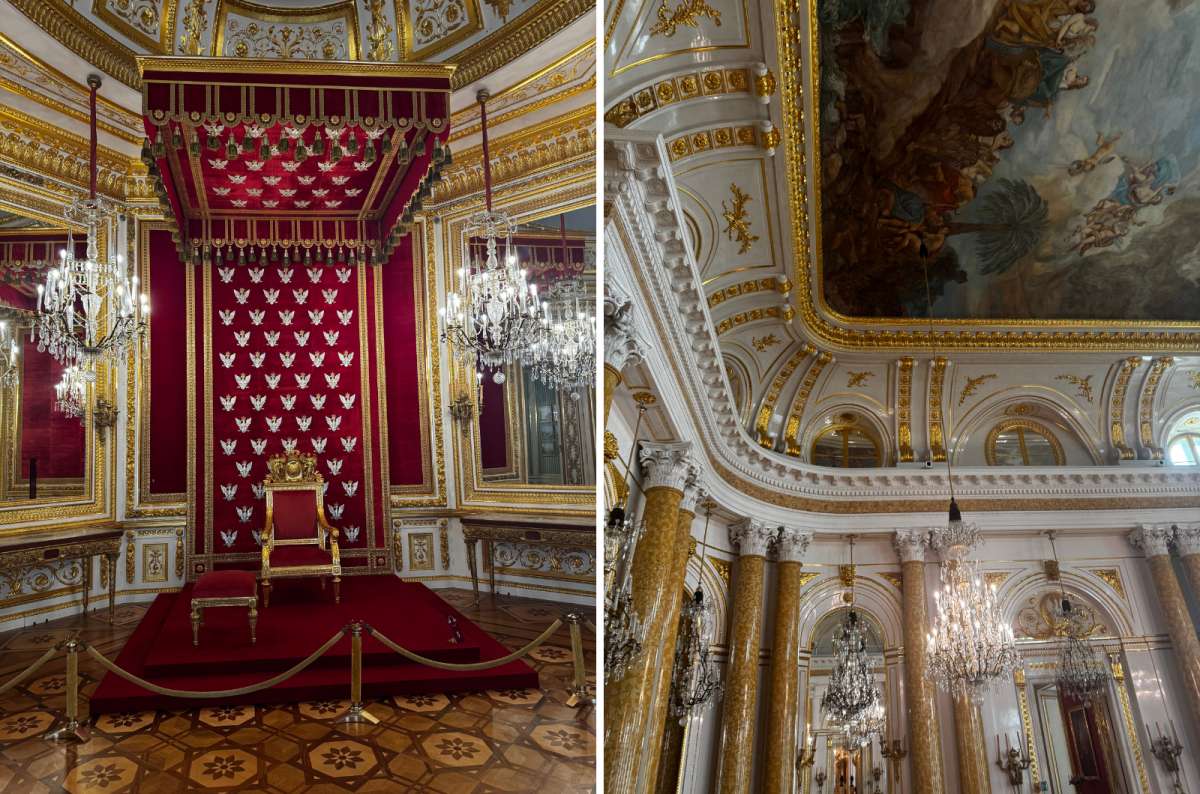
Inside the Royal Castle in Warsaw, where golden halls and royal tapestries celebrate the legacy of Poland’s last king, Stanisław Augustus Poniatowski
At first, I found the castle rather disappointing—mainly empty rooms and countless paintings. For the price, there’s truly almost nothing extraordinary inside, especially compared to the amazing Czartoryski Museum. The first part feels slow, but after the throne room, it gets much better. You can see the working table of the king, and I especially liked the two huge globes—traveling forever.
Also, the Polish kings surely loved their tapestries; they are absolutely everywhere in the castle.
The Palace itself is mainly dedicated to King Stanisław Augustus Poniatowski, Poland’s last monarch and a major art patron. There are paintings by Canaletto, whose works are like photos of 18th-century Warsaw and help you imagine the city before it was destroyed.
I liked the golden room with the throne, and there’s one special painting by the venerated Polish painter Jan Matejko—Stefan Batory at Pskov—Hussars in the painting. You gotta love heavy cavalry knights with wings in the paintings or anywhere else.
Fun Fact: Jan Matejko, the most famous Polish painter, was half-Czech (like I am—well, I am full Czech), and his name was Jan, like I am. A coincidence? I would not say so.
On a serious note, only about 5% of the original paintings remain in the castle; most of the collection is dispersed around the world.
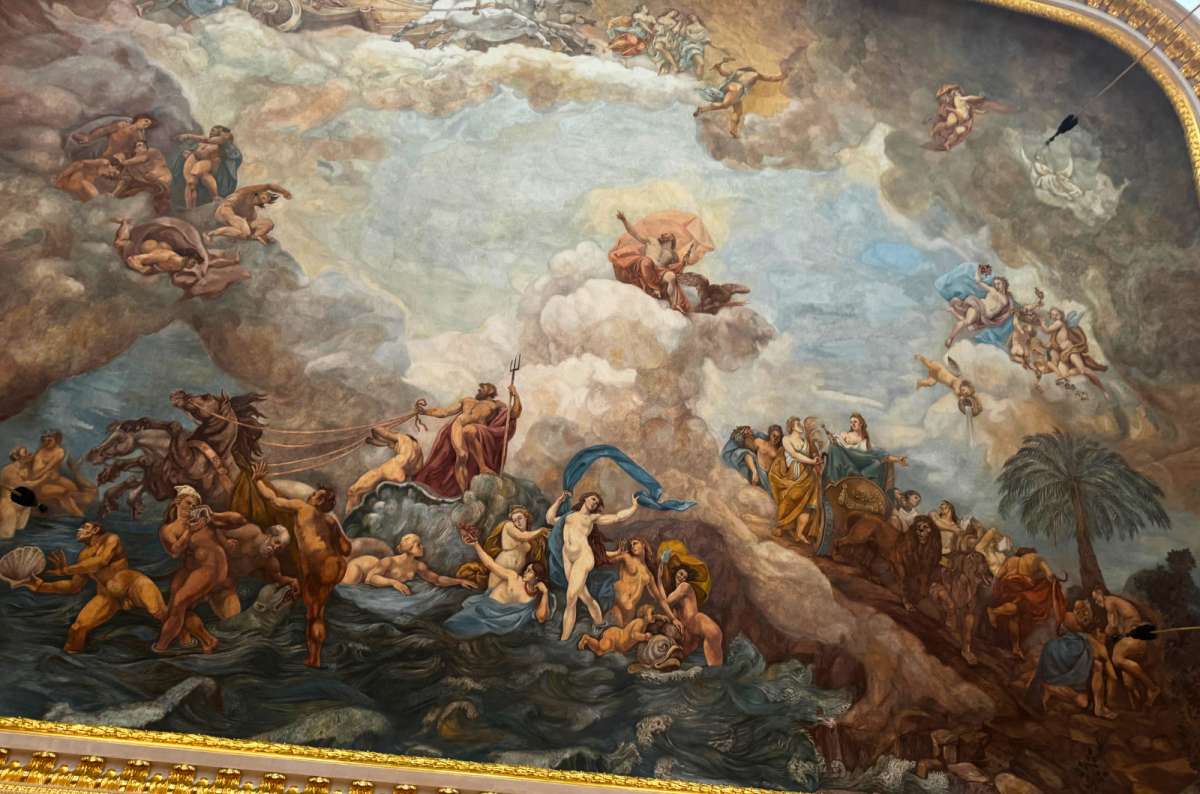
The Royal Castle’s ceiling art in Warsaw is pure drama and grandeur—mythological chaos frozen in paint, surrounded by gleaming gold
Visiting tips
- There are a total of 32 rooms, and it took me about 1 hour and 15 minutes to go through them. I wouldn’t set aside more than two hours.
- If you love royal palaces, you’ll enjoy it. For me, it was a bit underwhelming, maybe because I was expecting more. The audio guide saves the day with its interesting facts about each exhibit.
- After your visit, don’t forget to stop by the wishing bell just outside—for the superstitious people like my girlfriend, it’s a nice touch.

6. Little Insurgent Monument in Warsaw
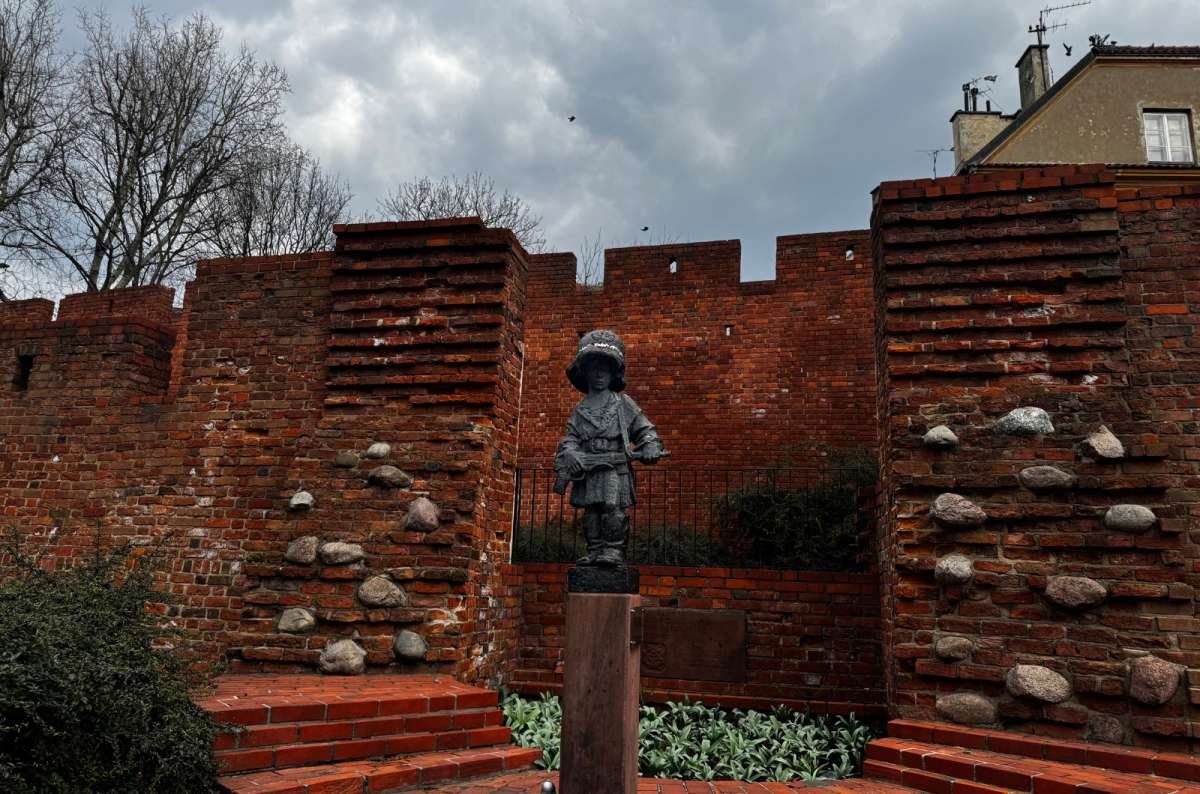
The Little Insurgent statue near Warsaw’s Old Town walls, a heartbreaking tribute to the child soldiers who fought and died during the 1944 Warsaw Uprising
Near the defensive old town Walls, you can find the most moving monument in Poland and comparable only to Bobby Greyfriars in Edinburgh.
The monument commemorates the child soldiers of the 1944 Warsaw Uprising, when even teenagers and young scouts joined the resistance. It was unveiled in 1983, nearly 40 years after the uprising, and instantly became one of Warsaw’s most recognized symbols.
I saw the monument after I visited the Museum of Warsaw and the Warsaw Uprising Museum, so I found it so much sadder. I knew that the Germans treated those children as legitimate targets.
It’s not a place where you stay long, but it’s one that stays with you. The contrast between the charming cobbled streets and this tiny soldier tells you more about Warsaw’s resilience than any museum could.
7. Palace of Culture and Science
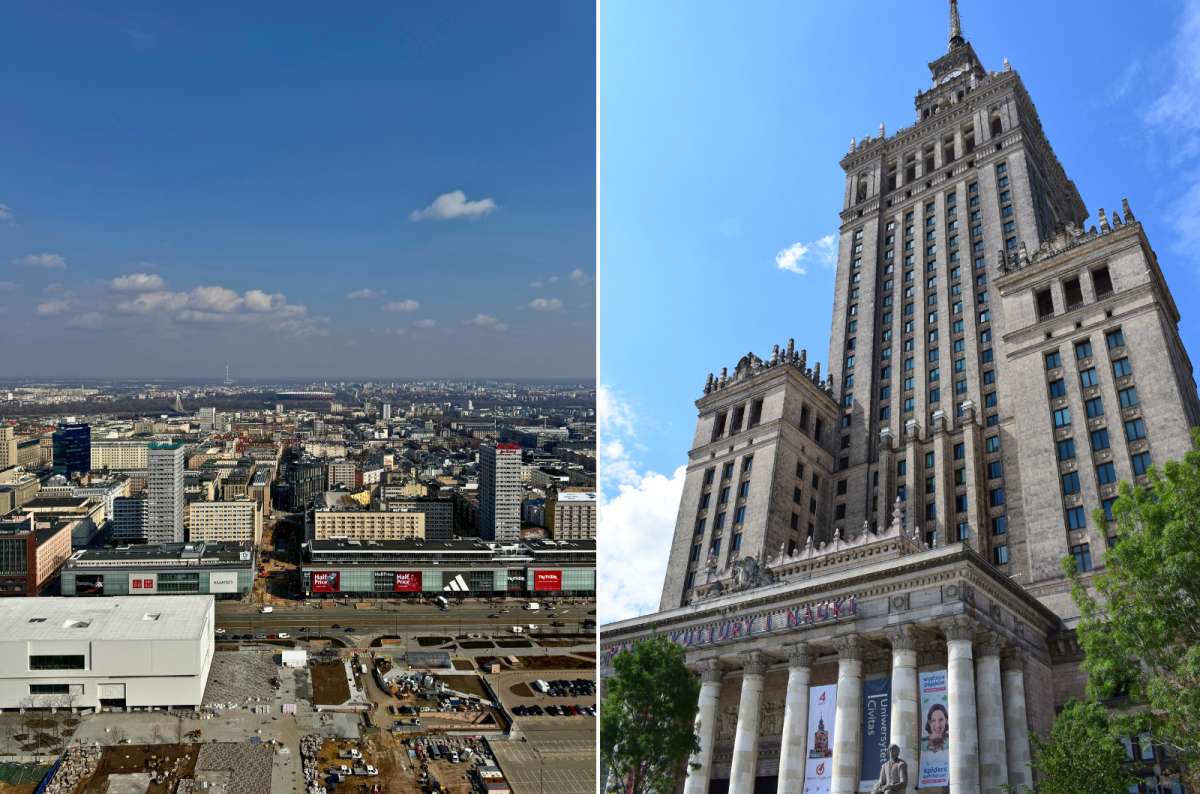
Warsaw’s Palace of Culture and Science—a Soviet “gift” turned skyline icon, offering some of the best city views from its 30th-floor terrace
Visitor info: The Palace of Culture and Science is open daily from 10:00 am to 8:00 pm. Tickets to the 30th-floor terrace cost about 28 zl and can be bought online. The terrace offers stunning panoramic views of Warsaw, especially at sunset.
It is an absolutely massive building—the kind that makes you stop and stare. Inside, there are multiple museums, exhibition halls, a theater, and even a cinema. You can easily spend anywhere from 30 minutes to several hours exploring the building and its surroundings.
The building itself stands 237 meters tall, making it the second-tallest building in Poland and one of the tallest in the EU.
It was completed in 1955 as a “gift” from the Soviet Union, designed by Soviet architect Lev Rudnev and inspired by Moscow’s “Seven Sisters.” Today, the locals have mixed feelings about it—part communist relic, part beloved landmark—but it’s impossible to imagine Warsaw’s skyline without it.
Most people come here for the viewing terrace, which costs 28 zl. It’s located on the 30th floor, and you’ll get there in seconds thanks to the lightning-fast elevator. The views are superb, and I would even consider visiting twice—once by day and once at night.
Top tip: there are automatic ticket-selling machines in the corners of the entry hall. If you use them, you’ll skip the ticket queue entirely.
From above, it becomes clear that Warsaw is a truly modern city, rebuilt almost from scratch. You can spot some of the city’s tallest skyscrapers, including Złota 44, which rises to 192 meters.
I always find views more enjoyable when they’re not too high—the perspective is better, and in this way, the Palace of Culture excels, standing right in the top third of Warsaw’s skyline.
8. Copernicus Science Center
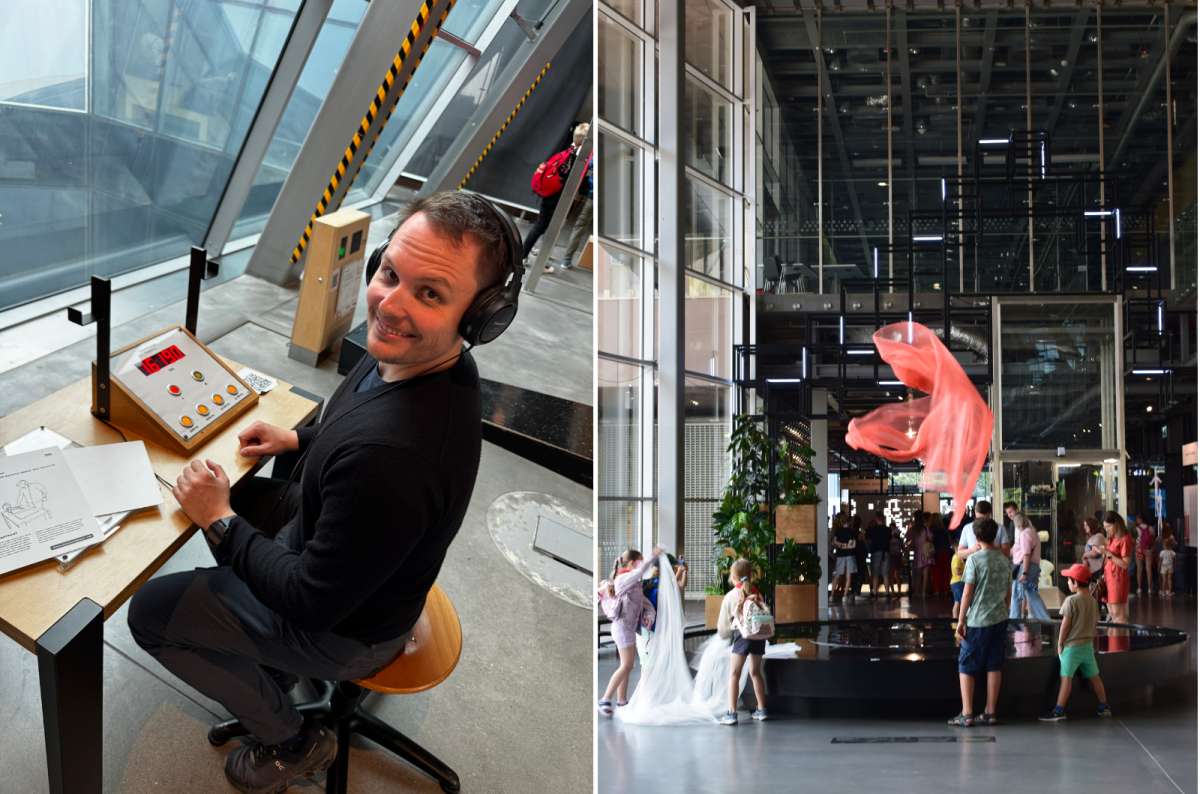
Dive into hands-on science at Warsaw’s Copernicus Science Center and discover how fun learning can be through sound, motion, and creativity
Visitor info: The Copernicus Science Center in Warsaw is open Tuesday to Thursday from 9:00 am to 6:00 pm, on Fridays until 8:00 pm, and on weekends until 7:00 pm. Tickets cost 46 zl per person, and you can buy them online (though the system is a bit tricky).
The Copernicus Science Center (Centrum Nauki Kopernik) is a large, modern science museum located right on the Vistula River. The building is part of a new neighborhood that feels like Hamburg.
Top tip: buy tickets upfront. When we came on a Sunday, the earliest available time slot was two hours later.
What can you expect inside of Copernicus Science Center?
Inside, it’s a huge interactive space full of experiments, robots, and scientific curiosities. It’s not unique to Warsaw—you’ll find similar centers across Europe—but it’s definitely worth a visit if you have more time or if you’re traveling with children (or, in my case, my girlfriend—who loved the place).
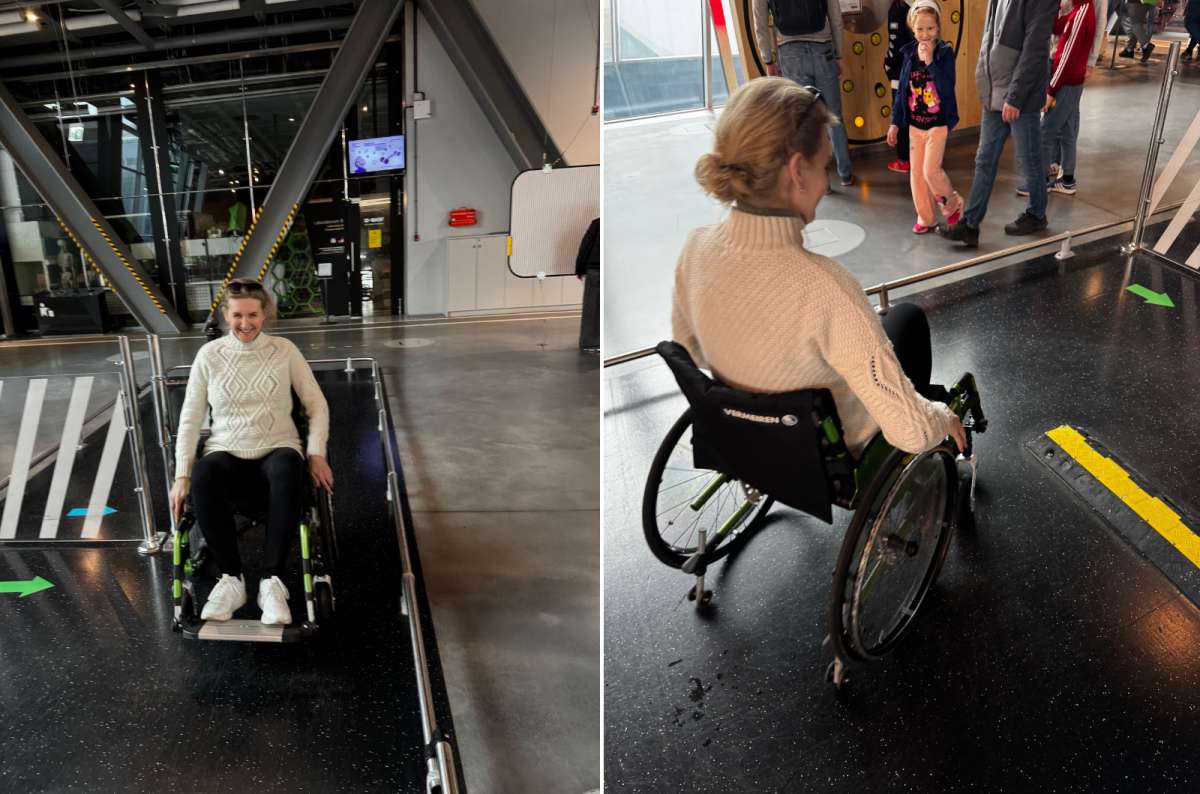
Trying out an accessibility simulator at the Copernicus Science Center
When I visited, there was an exhibit about poisons and venoms, which I honestly loved. The facts were basic, but it was meant for kids.
The other exhibits take you through robotics, AI, population growth, and urbanization, all with a very engaging and hands-on approach.
I found the displays highly educational, supported by clear statistics and visuals. A long time has passed since science centers had only scales and levers.
You should set aside at least 2–3 hours for the visit.

9. Łazienki Park (Spa Park)
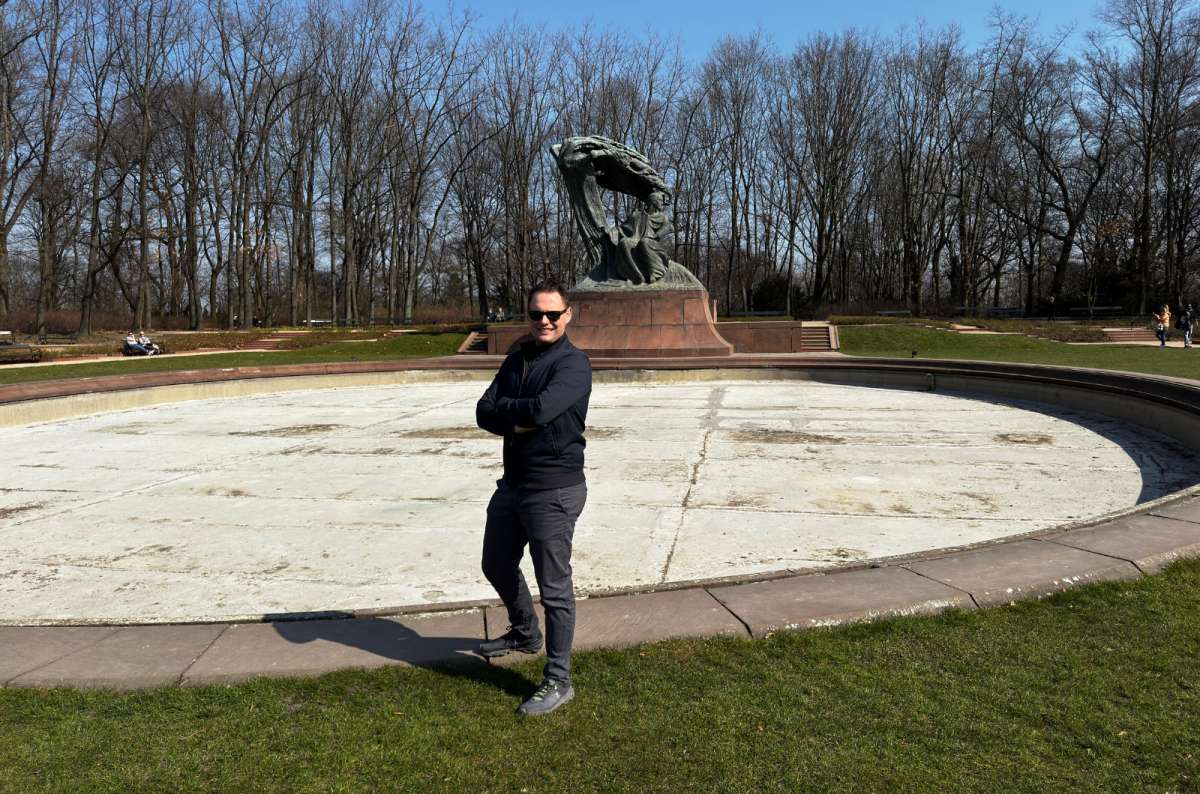
Iconic Chopin Monument
Lazienki Park is sort of the main park in Warsaw, with many sites to visit. Some statues, some galleries, and a lot of nice park walks. I had a lot of time to spend in Warsaw, so I included it in my Warsaw Itinerary, but if I were on a tight schedule, I would skip the park, as other places are more interesting.
What can you see in Lazienki Park?
Pałac na Wyspie (Palace on the Isle)
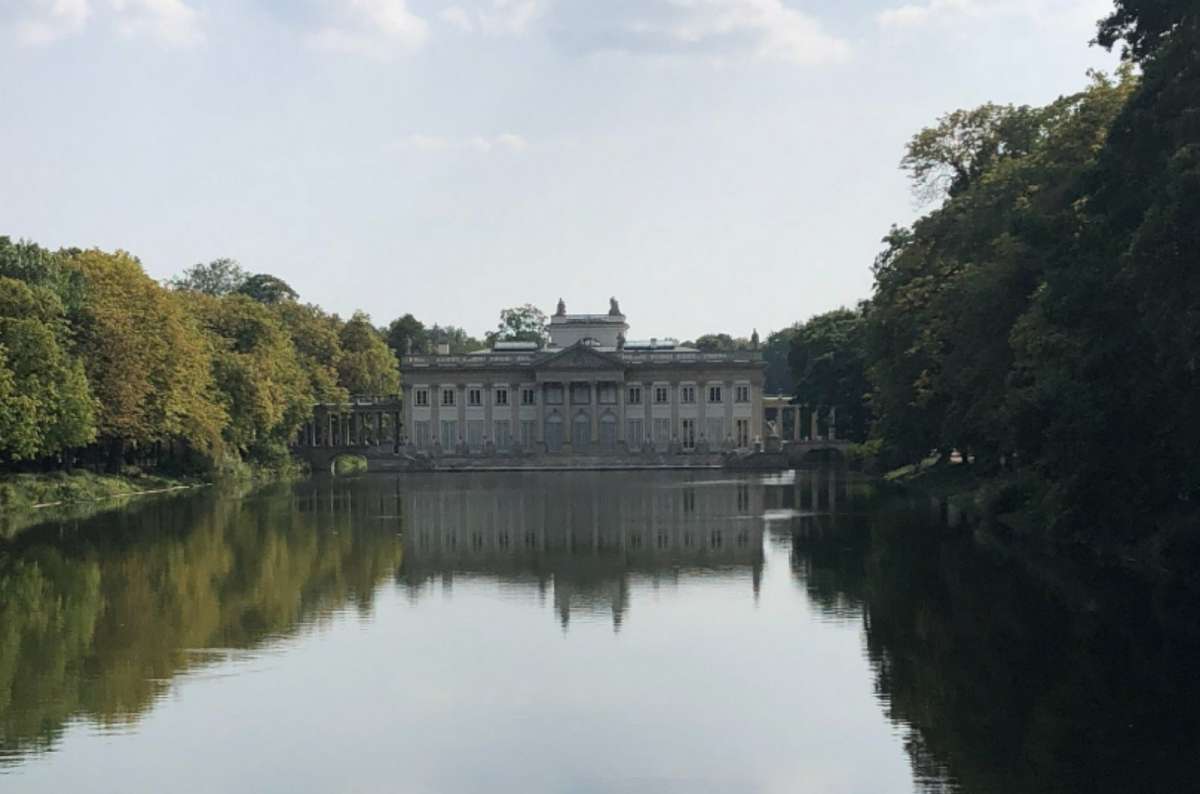
Pałac na Wyspie looks all elegant in the middle of the lake, because apparently every European capital needs one palace surrounded by water
Visitor info: The Palace on the Isle in Warsaw is open Tuesday and Wednesday from 9:00 am to 4:00 pm, Thursday to Saturday from 10:00 am to 6:00 pm, and on Sunday from 10:00 am to 4:00 pm. Tickets cost 60 zl for adults, and entry is free on Fridays
Pałac na Wyspie, or Lazienky Palace—a very romantic palace in the middle of the park. I’ll leave it up to you whether you want to visit; it’s the usual palace you can see in most European capitals... After visiting Kraków and Lublin, I was honestly not up to seeing another palace from the inside, at least for a day.
Inside the castle, there is a royal gallery, where you can find about 140 paintings ranging from Italian masters to German masters.
Chopin Monument
Another great point of interest is the Chopin Statue—I gather that most of the tourists visit the park because of that.
It is located next to the artificial lake, and the statue itself is really nice and menacing simultaneously. This is the kind of statue I would buy for my own garden.
Ujazdowski Castle
Visito info: The Ujazdowski Castle (Centre for Contemporary Art) in Warsaw is open Tuesday to Sunday from 11:00 am to 7:00 pm, with extended hours on Thursdays until 8:00 pm. Tickets cost 15 zl for one exhibition, 25 zl for two or all exhibitions. Admission is free on Thursdays.
Another classical palace above the park, originally built in the 17th century, with the Centre for Contemporary Art inside.
It's very nice from the outside and, unlike me, if you are into contemporary art, surely from the inside as well—I didn't go though.
Another important point of interest you can find in Lazienki Park is Amphitheater on the Isle, Myślewicki Palace, Old Orangery, and Belvedere Palace.
10. Holy Cross Church (Chopin Heart)
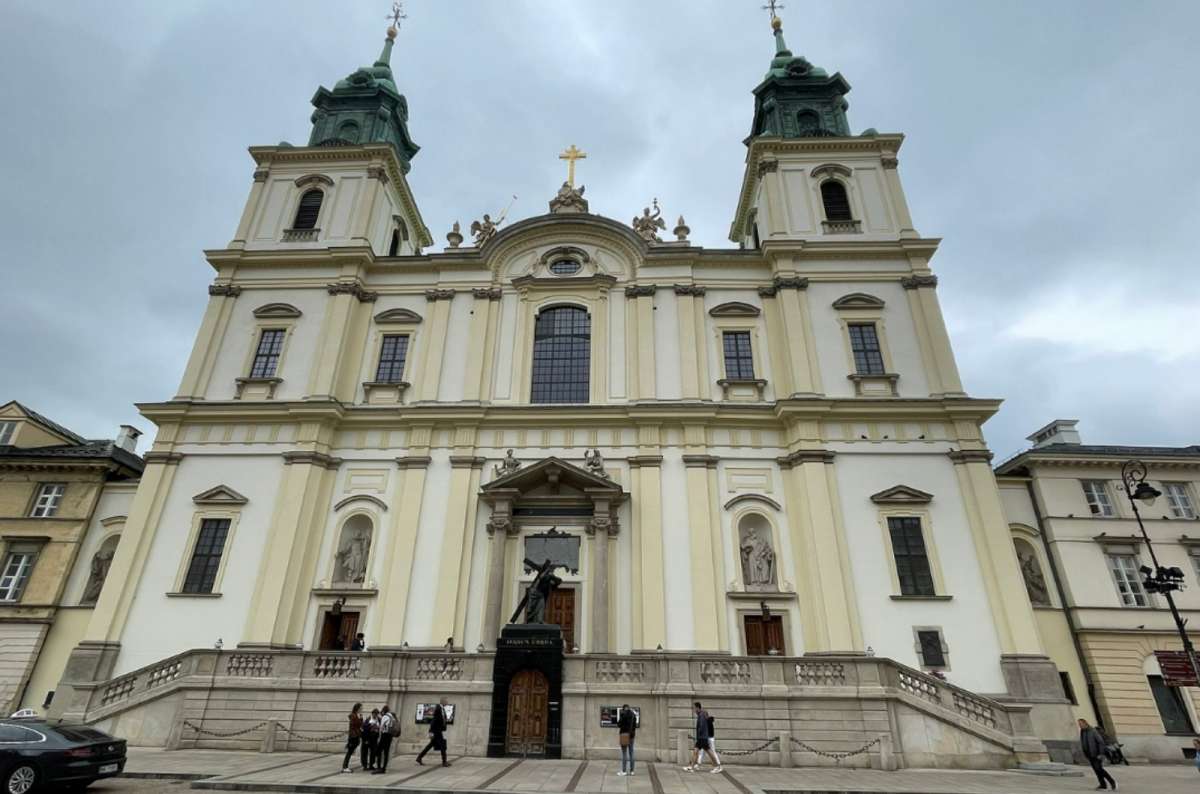
Holy Cross Church might look modest, but don’t let that fool you—it hides one of Warsaw’s most macabre secrets inside
Visitor info: The Holy Cross Church in Warsaw, known for housing Frédéric Chopin’s heart, is open to visitors from 10:00 am to 4:00 pm on weekdays, and entry is free. Holy cross church is one of the most important religious buildings in Warsaw. It was built in the 17th century in Baroque style, which I very much dislike, as the decor is very simple and not as lavish as the Renaissance. But there is one important and macabre reason the visit the Church.
Heart of Frédéric Chopin
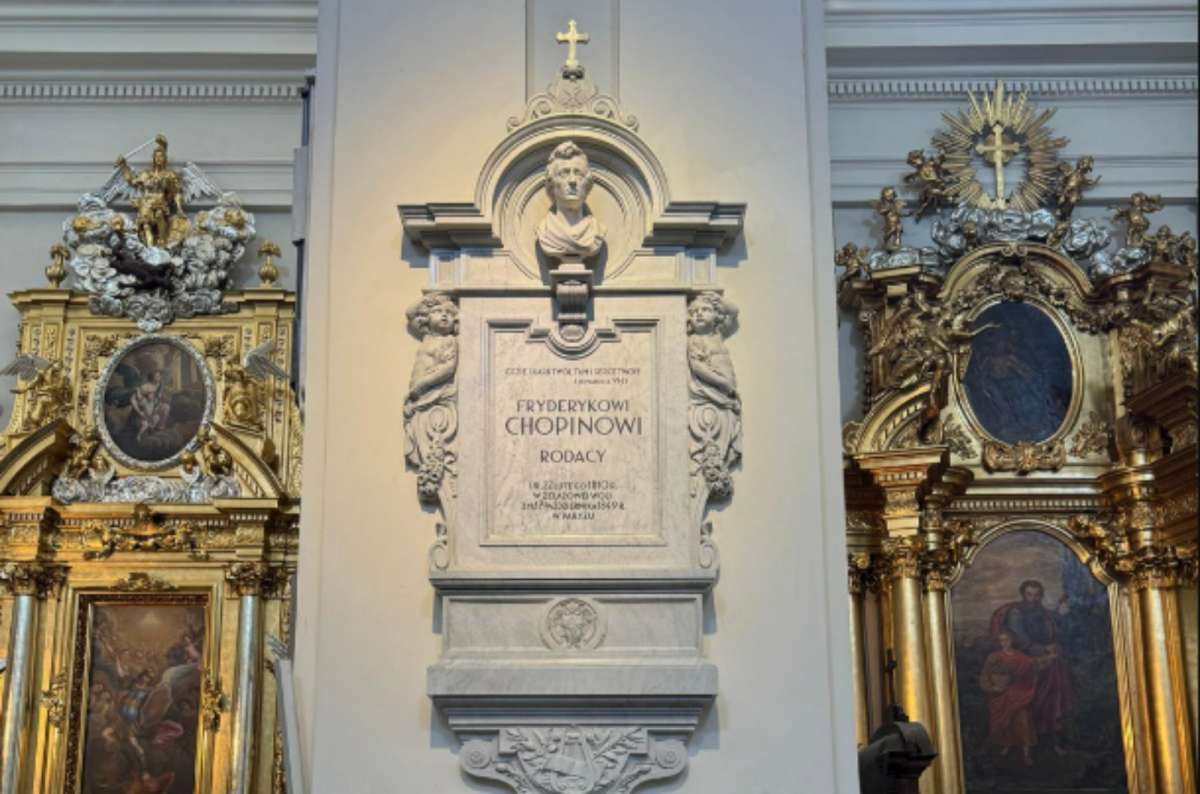
Just your average Warsaw sightseeing… oh, and Chopin’s actual heart is in that pillar. Because why settle for a statue when you can have the real organ?
The sole reason everyone is visiting the Holy Cross Church is the Heart of Frédéric Chopin, a macabre symbol of the church. And me through the years, having collected most of these weird, dead people's religious-like relics, the blood of Christ or Mohammed's beard, I had to see it.
The heart itself is placed in the little urn in one of the pillars.
The only negative aspect of this otherwise perfectly normal thing to see in Warsaw is that it is a bit far from the city center, in Krakowskie Przedmieście.
11. Basilica of Warsaw St John the Baptist
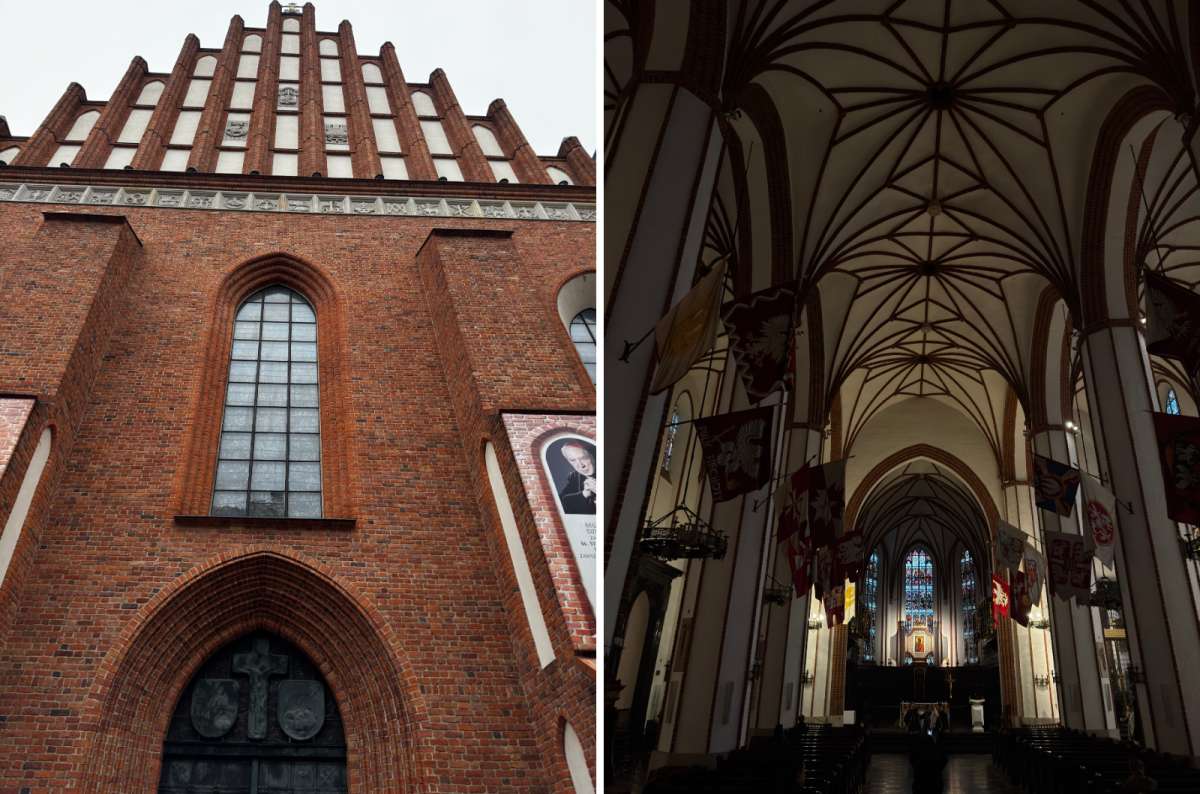
Warsaw’s St. John Archcathedral—rebuilt brick by brick after WWII and still managing to outshine the fancier churches
Visitor info: The Archcathedral Basilica of St John the Baptist in Warsaw is open daily (often early morning until around 8:00 pm) and entry to the main church area is free. There is a small fee for visiting the crypts beneath the cathedral. St. John Archcathedral is sort of the main Cathedral in Warsaw. The pre-war buildings were one of the oldest and most important churches in the city, and as Warsaw's history goes, it was destroyed in World War II, as almost everything else, and rebuilt after the war.
You will visit the St. John Archcathedral anyway, as it is the most prominent church in the city center, and it is super close to the Royal Castle and Syrenka Square.
I liked that they rebuilt it in the bricklike Masovian Style—I have a kind of crush on brick buildings, so there is no surprise that I find it the prettiest church in Warsaw.
Inside, there is very simple decor, but you can find one of the most important tombs in Poland—Henryk Sienkiewicz (Nobel Prize winner) and the last king of Poland, Stanislaw Poniatowski.
The only letdown is that you can’t really take any meaningful pictures from the outside, as it is located in very narrow streets. So no selfies for Jan.
12. Living Under Communism Museum (Muzeum Życia w PRL)
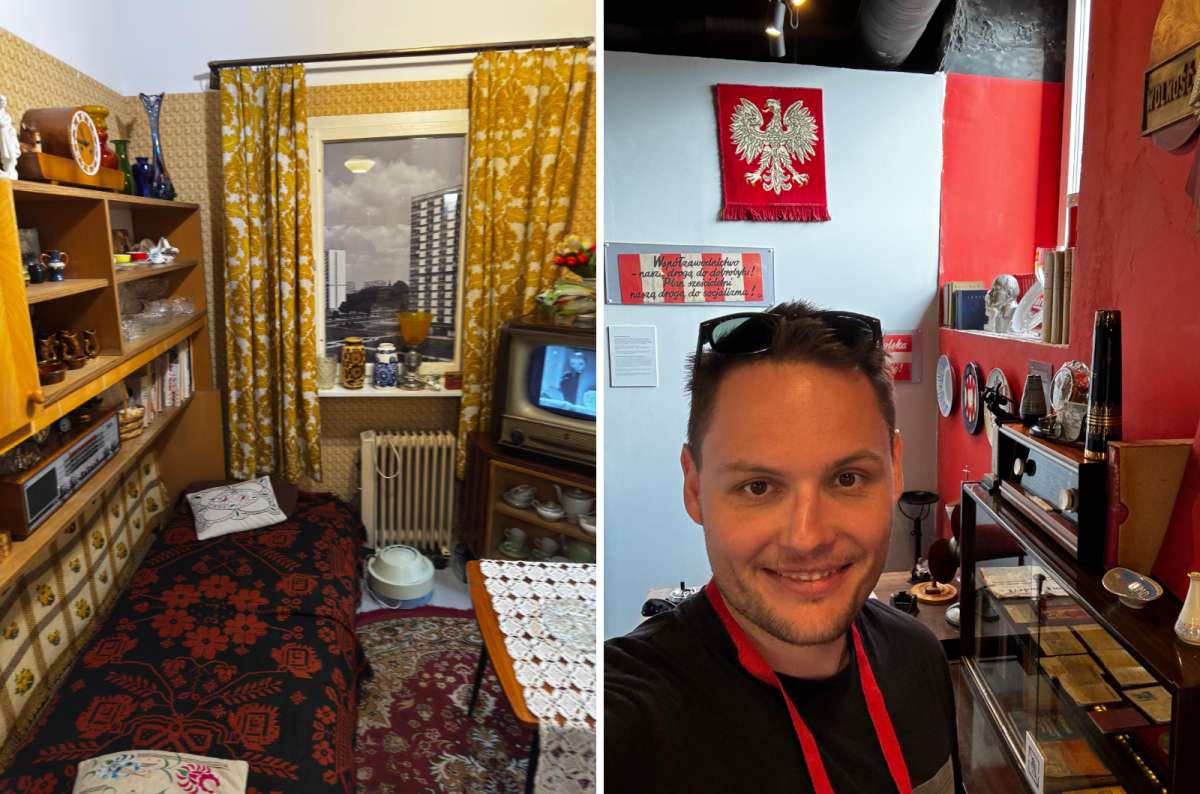
Communism chic at its finest—mustard curtains, propaganda flair, and a TV that probably had two channels on a good day
Visitor info: Entry costs 30 zl and you will spend about 30–45 minutes.
Top Tip: I was wandering around like an idiot before I was able to find the entrance. It’s next to KFC.
You will find here a fun little museum. I think that it might be a bit funnier if you are from Eastern or Central Europe, and the history of the museum is sort of connected directly to your country.
What to expect in the Living Under Communism Museum?
The exhibit starts with a wall of statistics, and everybody who knows me knows that I like my statistics. The statistics are basically propaganda showing how everything increased under communism.
After a while, it felt like a summary of Wikipedia—a lot of text and very few interesting items on exhibit. Then it gets better as you can peek into the homes of 60s and 70s Poles and see how "better" it used to be.
Fun Fact: I found it interesting that the maximum apartment size until 1984 for four people was 45 sq meters.
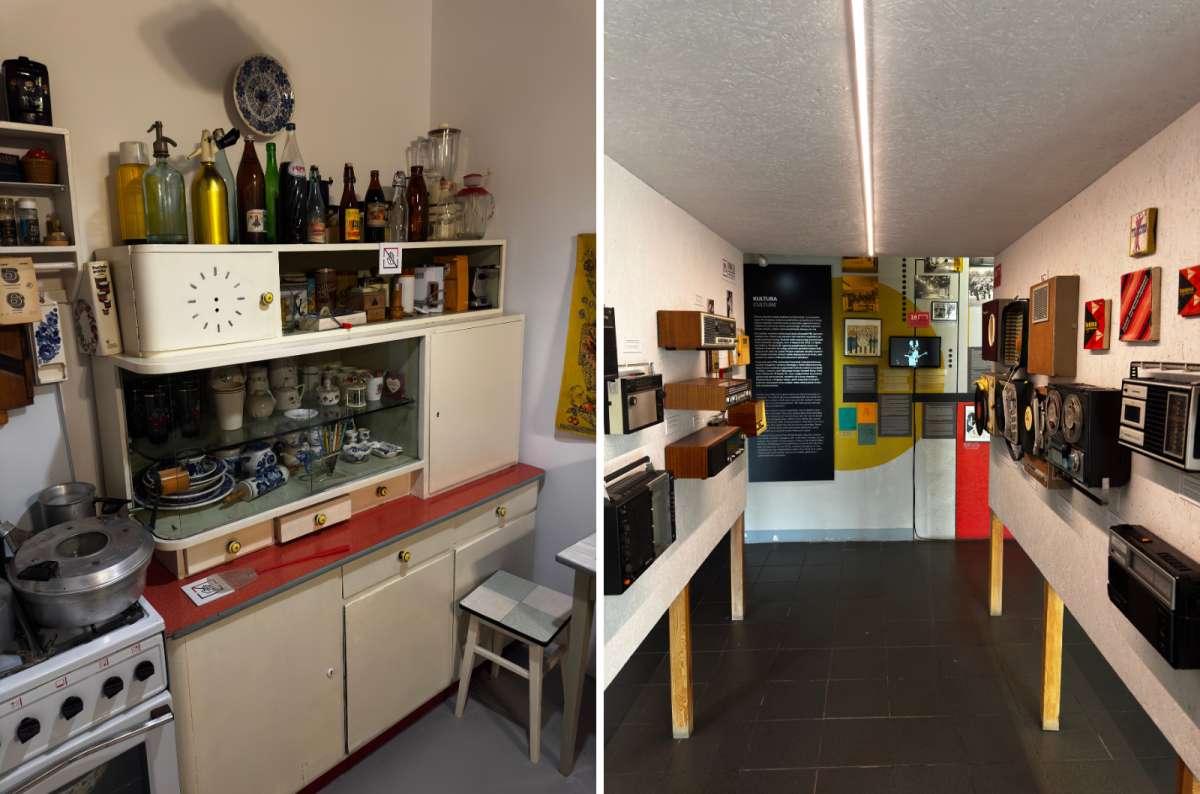
When your kitchen was smaller than your ego and your radio had more attitude than Spotify ever will
The sole reason to visit this museum is the idea of the communist era canteen and also the children’s toys, which reminded me of the toys of my parents.
You will be on your way in a maximum of 45 minutes.
13. Syrenka Square (Old Town Market Square)
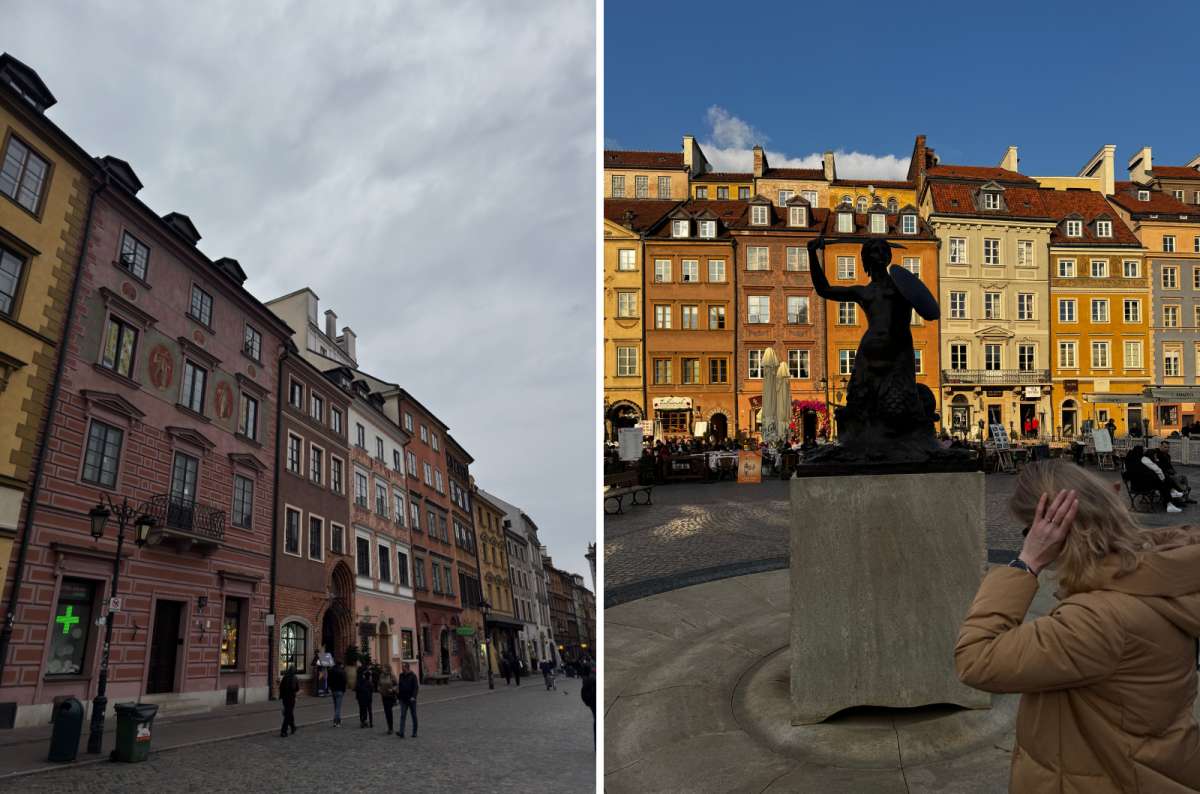
The Little Mermaid of Warsaw holding it down since the 14th century—no Disney magic, just Polish grit and pastel perfection
Another centerpiece in Warsaw is the Syrenka Square, which is very close to other significant places such as St. John Basilica, Royal Palace, the Little Insurgents, or the city walls.
In the middle of the square, you can find the statue of the Little Mermaid of Warsaw (Syrenka), a symbol of Warsaw.
The square itself was built in the 14th century and was rebuilt in the 1950s.
14. Barbican and City Walls
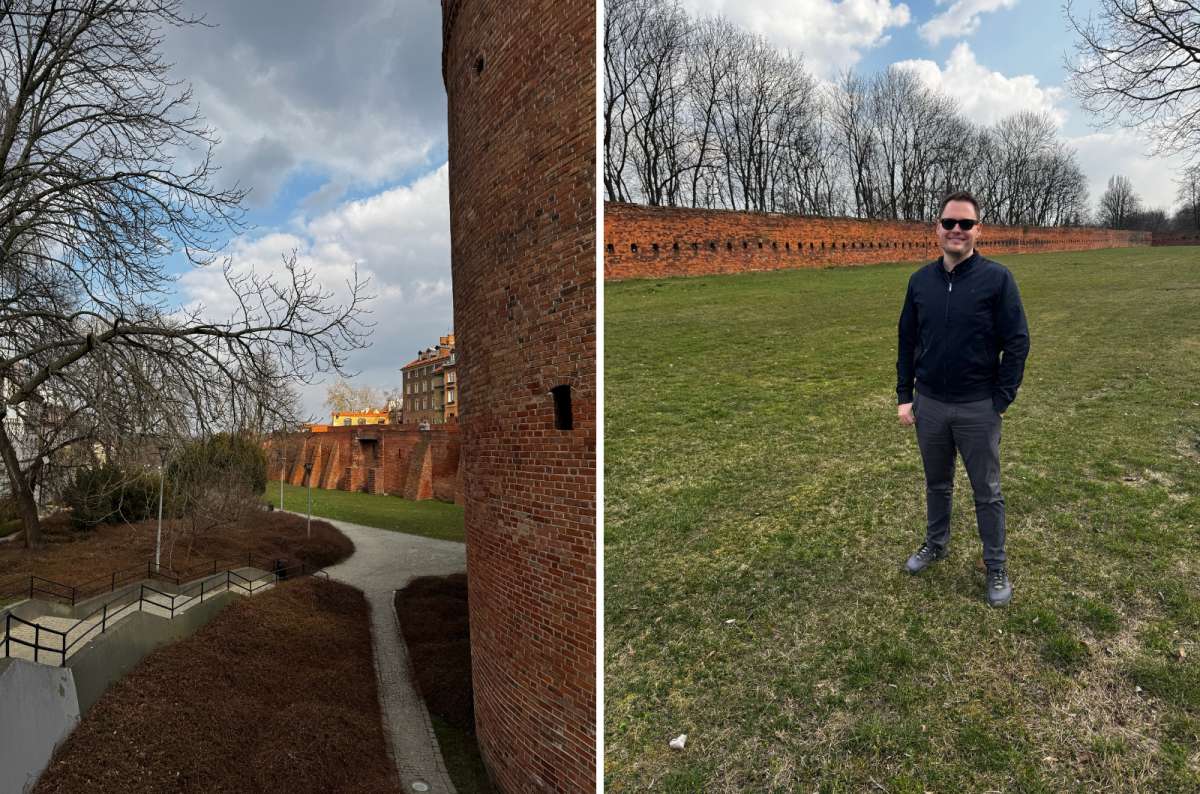
Brick walls, moody skies, and Renaissance vibes coming in strong because Warsaw knows how to make history look photogenic
If you want nice "Renaissance" pictures in Warsaw, this is a must-visit place in Warsaw. I took one of the best pictures here and around.
Warsaw Barbican
It partially survived WWII and was partially rebuilt; it is one of the last remaining parts of the defensive fortification in Warsaw. You will stumble once you go from Old Town to the New Town, or once you want to see the Little Insurgent.
Top Tip: The best place to take pictures is near the Barbican, facing the old walls.
15. Museum of Geology
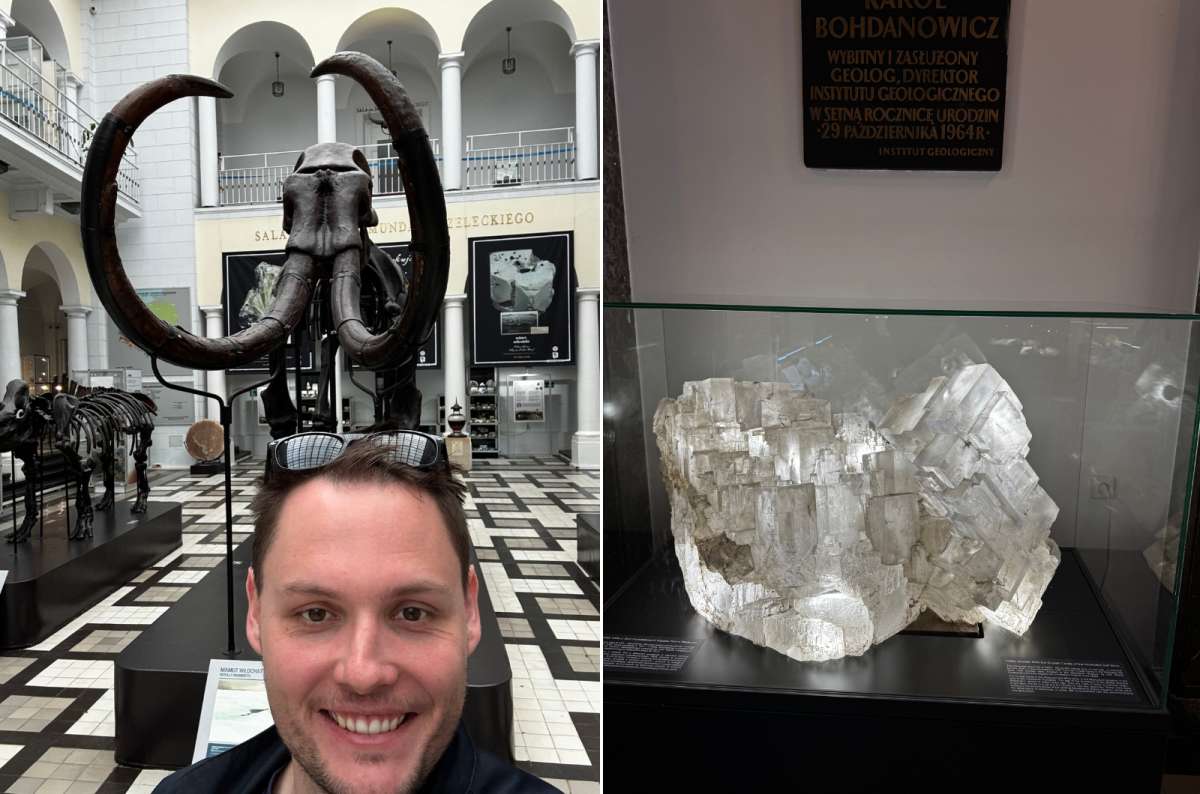
When you go looking for dinosaurs and end up vibing with a mammoth instead—Warsaw’s Geological Museum doesn’t disappoint
Visitor info: The Geological Museum of the Polish Geological Institute in Warsaw is open Monday to Friday from 9:00 am to 5:30 pm, and on Sunday from 10:00 am to 3:00 pm; it is closed on Saturdays. Entry is free. I went because I really liked the Smithsonian Museum in Washington, DC. I didn’t know what to expect, but I had time to visit, so why not?
I liked this museum much more than the 15th place, but I don't consider it for everyone. You will have to drive there as it is a bit further from the city.
Inside the museum, you can find some great fossils and even some dinosaur skeletons, as Poland used to be partially a sea and partially a hot climate forest.
The visit itself won't take you longer than 2 hours, or even quicker if you don't speak Polish, as most of the information is only in Polish.
16. Warsaw Citadel (Katyń Museum, Polish Army Museum)
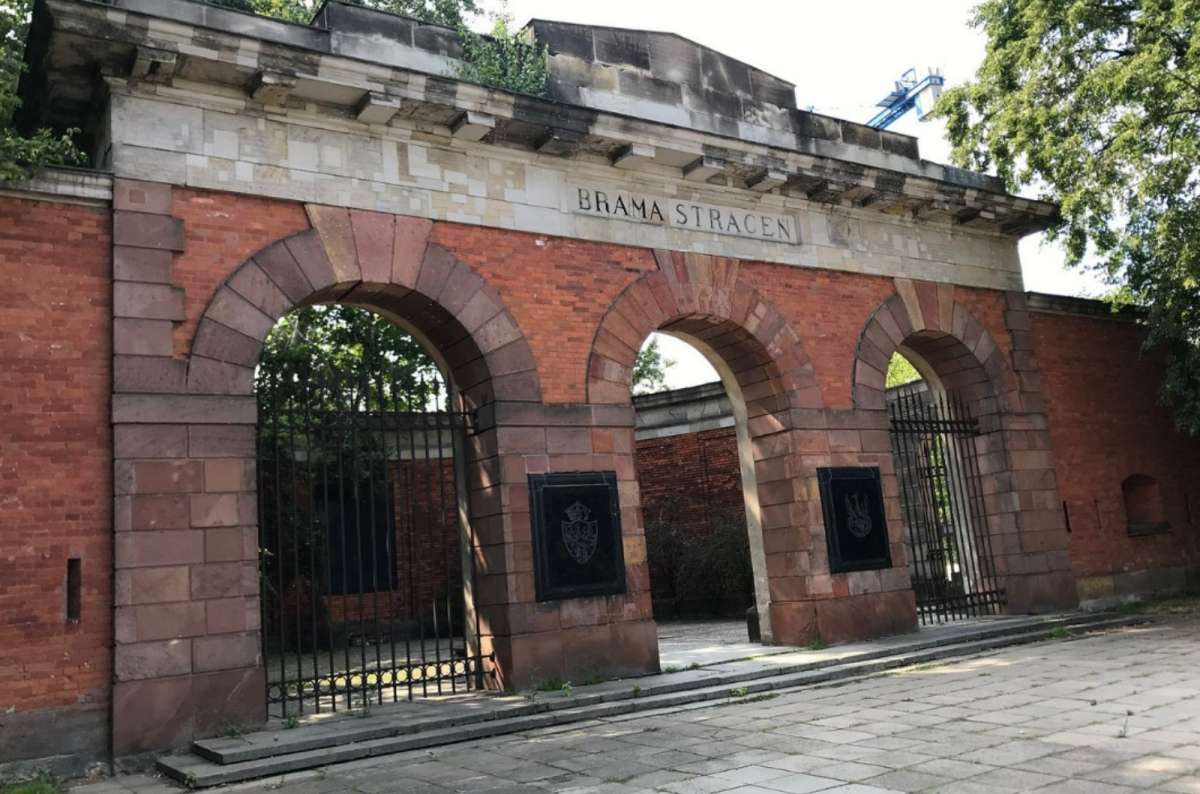
The Gate of Execution at Warsaw Citadel
This is a bit weird one as it is located a bit further from the city, and it could be either great (if you are seriously into War history) or a letdown if you don't care about it.
The museums are located in a huge park of a former fortress.
Polish Army Museum
Visitor info: The Muzeum Wojska Polskiego (Polish Army Museum) in Warsaw is open Wednesday to Sunday from 10:00 am to 4:00 pm. Regular admission is 35 zl for adults, and entry is free on Thursdays. Very recently relocated museum (moved here in 2023). This huge modern building houses one of the best Army Museums in Poland.
It exhibits all the usual army stuff, from armor, sabers, to tanks and canons. But it is much more, it is a museum of Poland's history and its struggle and wars with its neighbors, mainly Russia, why is it always Russia?
Katyń Museum
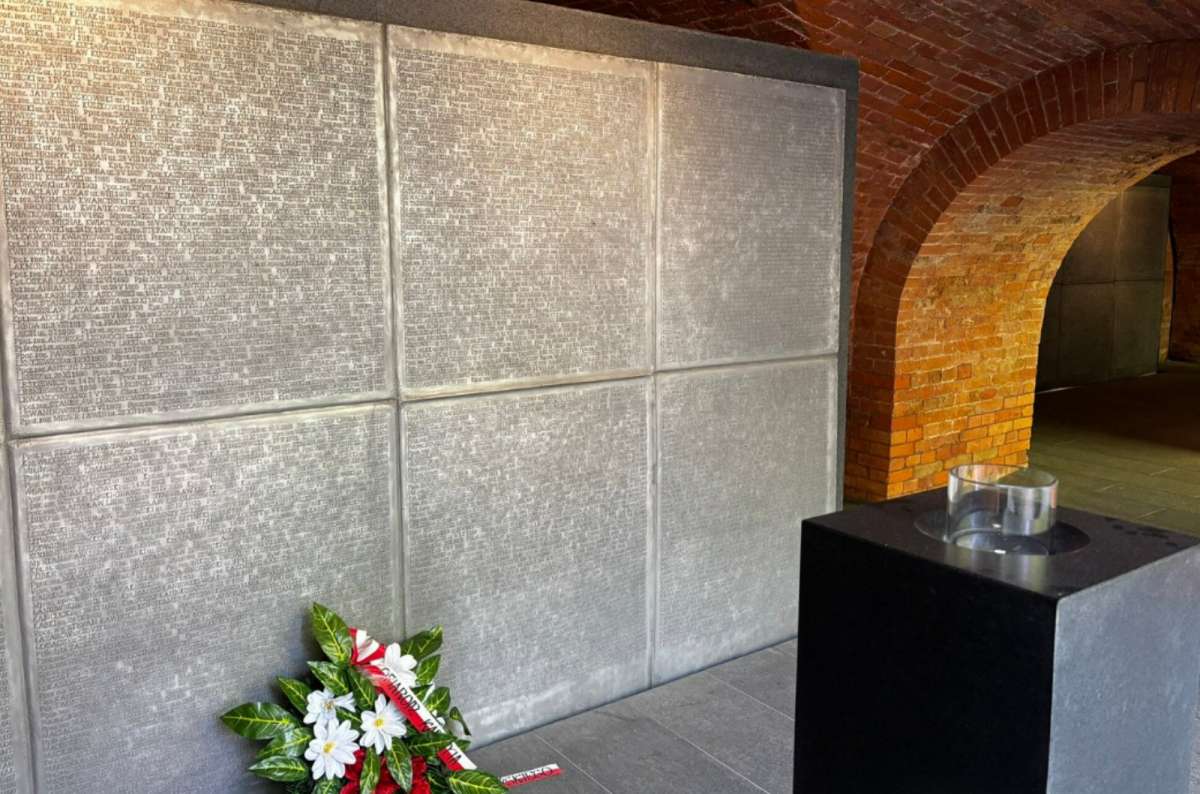
A wall that speaks louder than words—every name here tells a story the Soviets tried to erase
Practical info: The Muzeum Katyńskie in Warsaw is open Wednesday from 10:00 am to 5:00 pm, and Thursday to Sunday from 10:00 am to 4:00 pm (closed Monday and Tuesday). Entry is free.
The museum is dedicated to the infamous Katyn Massacre in 1940, where 22,000 Polish officers and intellectuals were murdered by the Soviets. (The Russians like to pretend that it never happened.)
The museum is a powerful storytelling of all the context that preceded and the aftermath it had.
Inside, you can expect some dim lighting, concrete corridors, and all these "scenic" displays.
I spent 70 minutes here.
17. Pawiak Prison
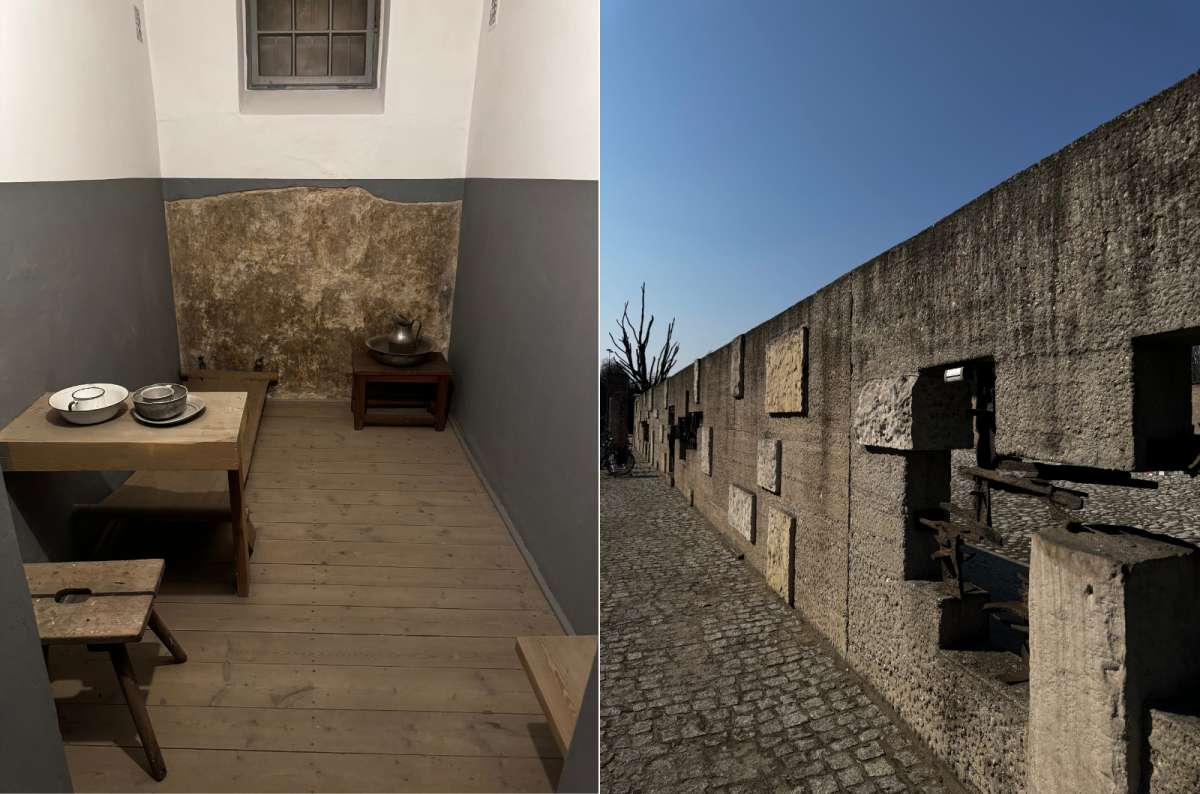
Pawiak Prison Museum
Visitor info: The Pawiak Prison Museum in Warsaw is open Wednesday to Sunday from 10:00 am to 5:00 pm. It costs 20 zl, which is pretty cheap, and entry is free on Thursdays
This is a place you should visit, and I sure didn't like it. It is one of the most important reminders of the world war II horrors, and put in so unappealing storytelling that I could not believe it is a Polish museum (Poland has some of the best museums in the world).
Inside, you can find stories of the prisoners and executioners. You can see what the cells looked like and what it was like to be held here. I still have to consider it among the best things to do in Warsaw while visiting Warsaw.
The Museum is located close to the POLIN—so plan to combine your visit so you don't have to visit the same place twice.
Top Tip: You will need an audio guide. The descriptions are chaotic and not extremely educational or informative either. There are many items absolutely out of context
Set aside a maximum of 30 minutes.
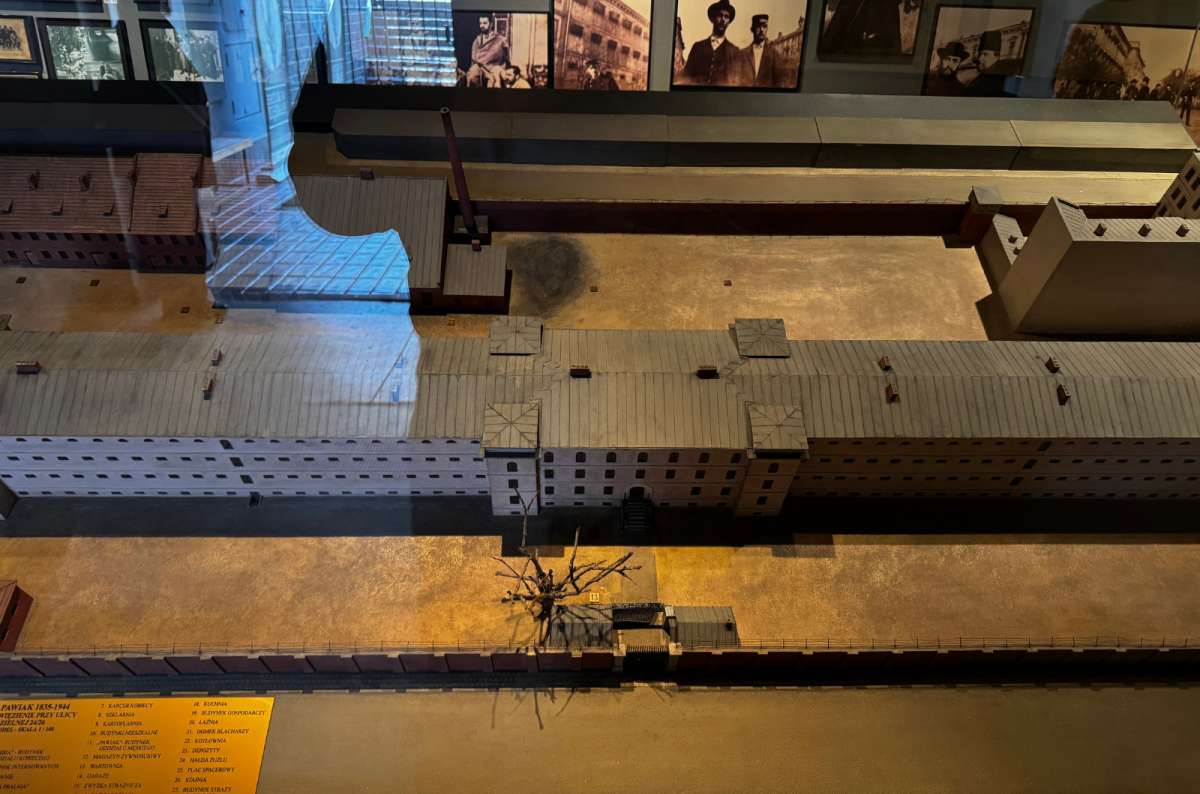
A model of Pawiak Prison
18. Fort Legionów
Located between the Warsaw Citadel and the Gdański Bridge, a fortification built in 1850 under the Russian management.
The fort's purpose was to guard the Vistula River bridge crossing. You will learn on-site that it served many roles, from a fort to a WWII shelter.
You can see it mainly from the outside as it is only occasionally open to visitors.
19. Chopin Museum (Muzeum Fryderyka Chopina)
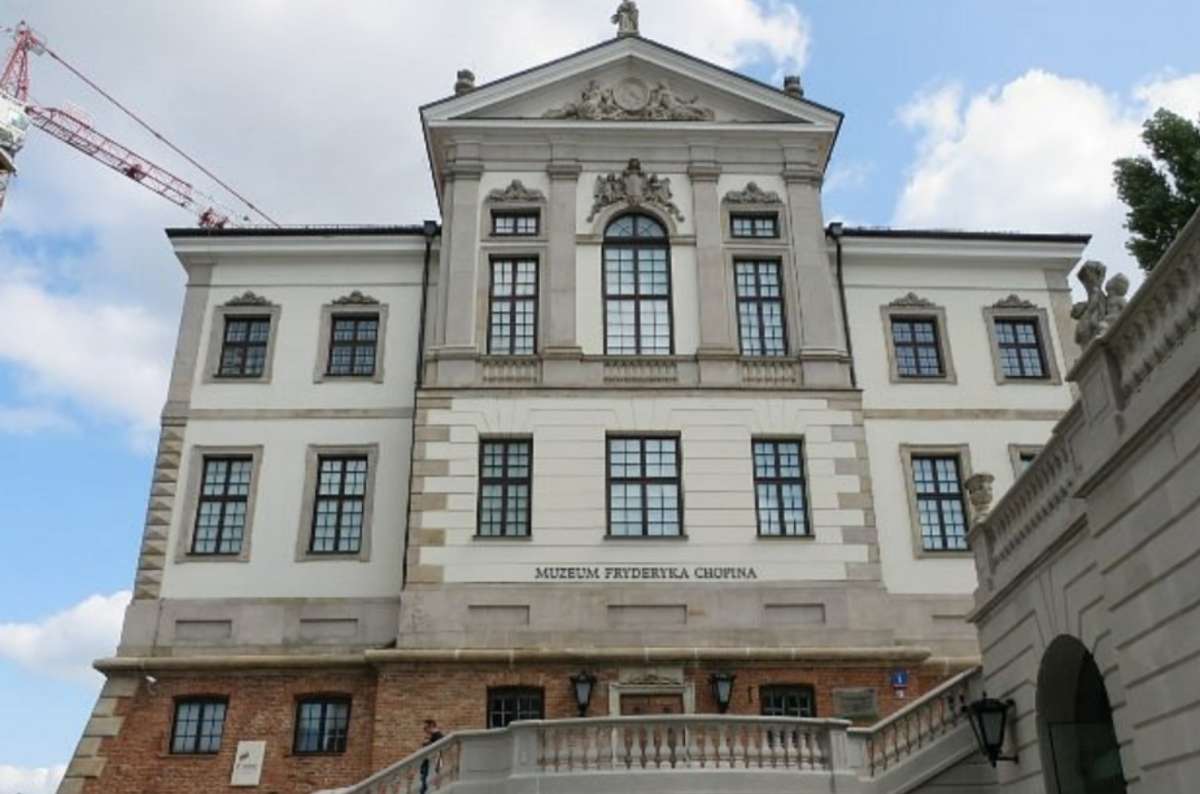
The Fryderyk Chopin Museum—because if Warsaw had a soundtrack, this guy composed half of it
Visitor info: The Muzeum Fryderyka Chopina (Chopin Museum) in Warsaw is open Tuesday through Sunday from 10:00 am to 6:00 pm, and is closed on Mondays. The standard admission ticket costs 35 zl, and entry is free on Wednesdays.
There are so many things to do in Warsaw, Poland, that being in 19th place is nothing wrong with it. It only means that visiting places on my list that are higher just have a higher priority.
Chopin is connected as much to the city as he is connected to classical music.
The museum itself is located in Ostrogski Palace, close the the Royal Palace and the old town.
In the museum, you will find artifacts connected to Chopin's life and multimedia parts of the visit. Expect an impressive collection of letters, portraits, and pianos.
I liked that the exhibition doesn’t just glorify Chopin but shows him as a real person—his travels, heartbreaks, and friendships. The building itself dates back to the 17th century and was carefully restored after WWII. You can easily spend 60–90 minutes here, though music lovers may linger longer.
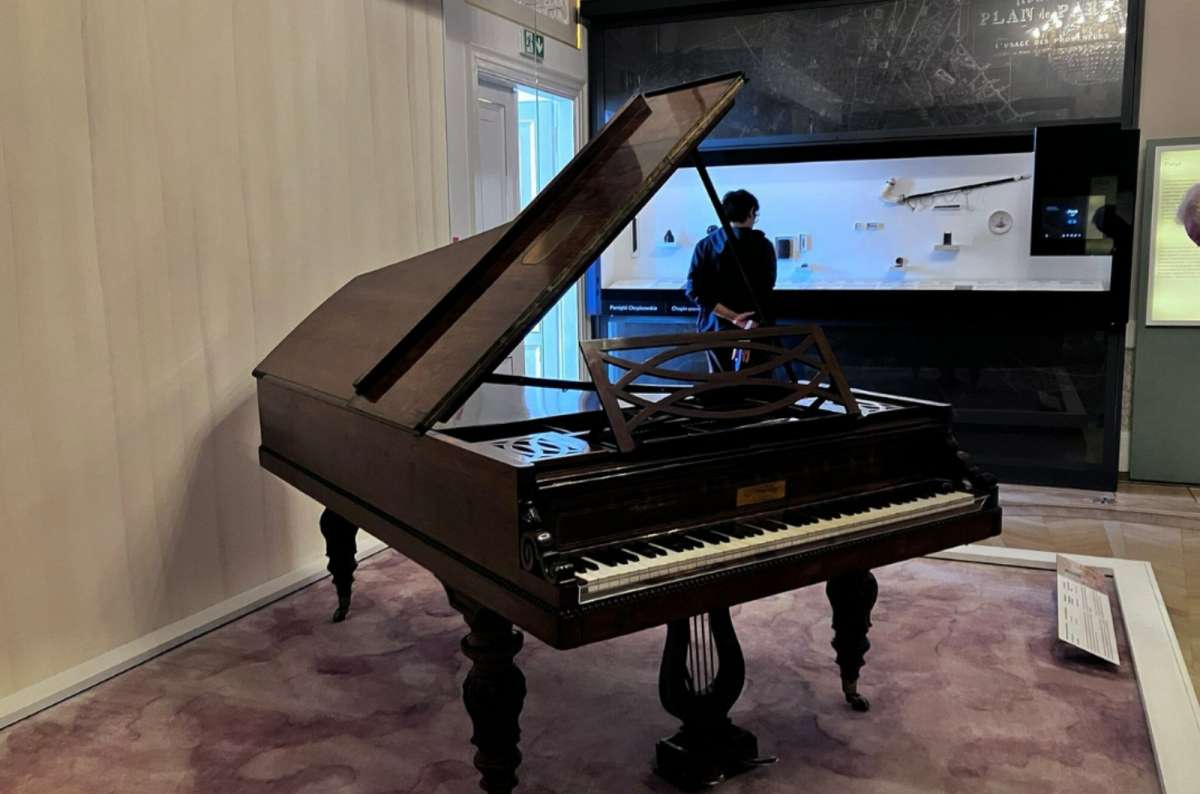
The man, the myth, the maestro—Chopin’s piano, where heartbreak turned into harmony
Other Things to do in Warsaw, Poland
I know the list could be endless with so many things to do in Warsaw, and especially under a limited Warsaw itinerary, you can't manage to see everything. Anyway, I felt the urge to mention other interesting places to visit in Warsaw, and I would consider visiting them if you have more days.
- St. Anne's church
- Saxon garden
- Polish Vodka Museum
- Neon Museum
- Arkady Kubickiego
- Vistula river bank walk
- Day trip to Treblink
- National Museum
- The Presidential Palace and the whole Royal Route
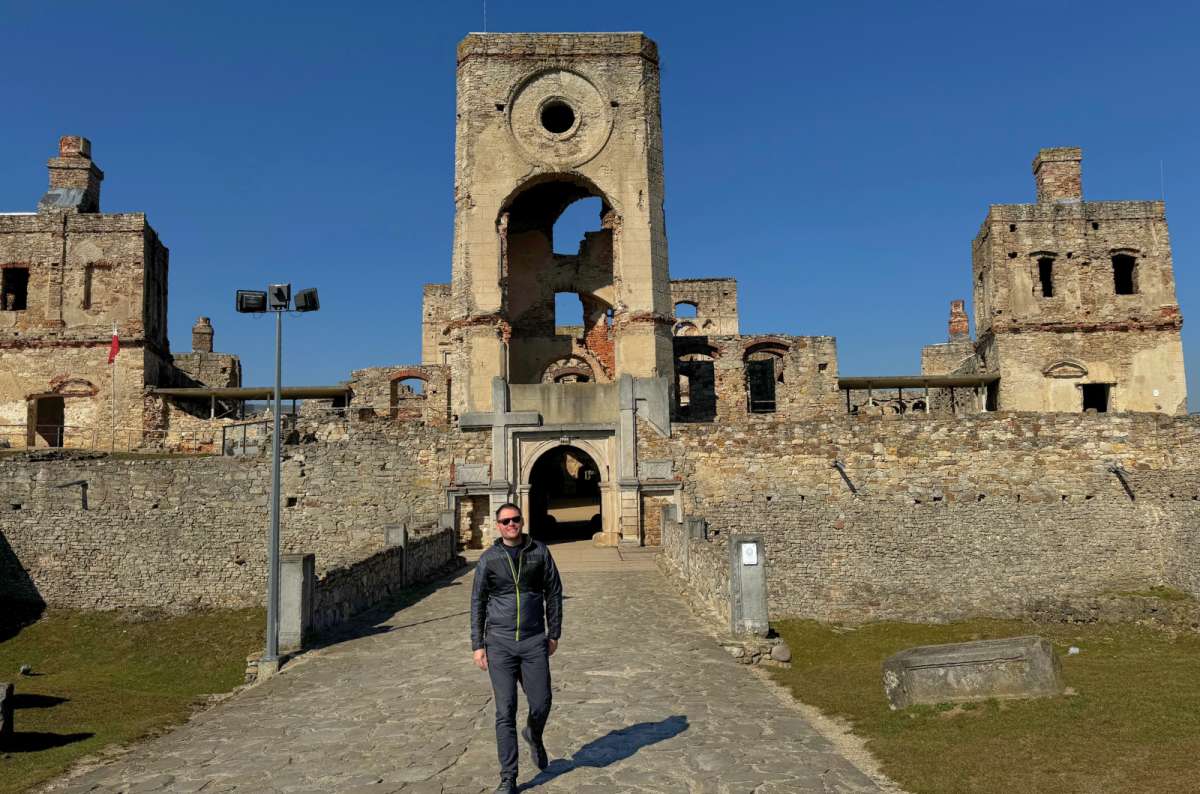
Read more about Poland’s hidden gems, like Krzyżtopór Castle, in my Poland travel blog
Conclusion: Is Warsaw worth visiting?
For me, Warsaw is one of the most interesting cities in Europe to visit, with great modern architecture, a rebuilt history center, and world-class museums of the Warsaw Rising Museum and POLIN. Add to the mix some of the most delicious Polish food you can try anywhere, and you're out for one of the best city weekends of your life.
You might also be interested in reading:
- My Top 13 Things to Do in Krakow | 3-Day Krakow Itinerary and Map
- How to Visit Auschwitz, and Is Auschwitz Worth Visiting?
- 13 Things to Do in Lublin Poland
Sometimes, all you need to do is take the first step... I've filtered out the best hotels in Warsaw for you
Save it for yourself to come back to later, or share with your friends on social media!
This post contains affiliate links. If you make a booking through one of my links, I may earn a small commission—at no additional cost to you. Thank you for your support!




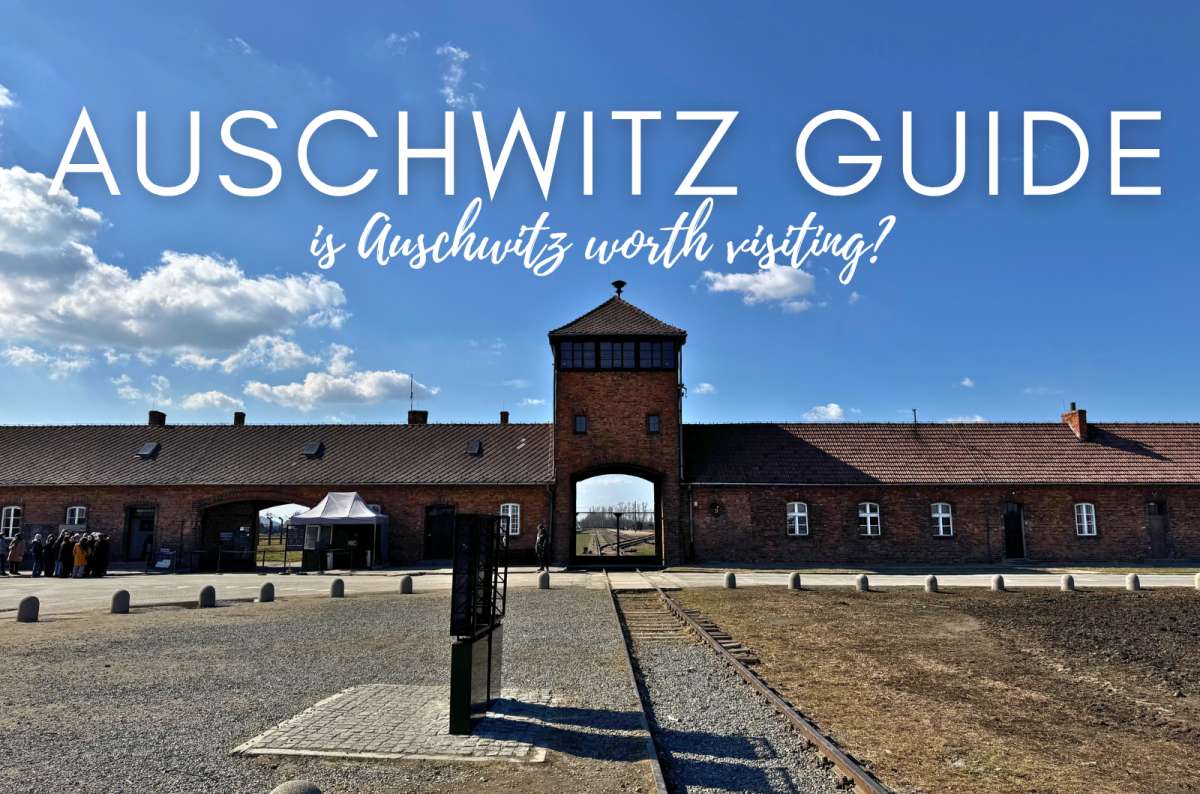
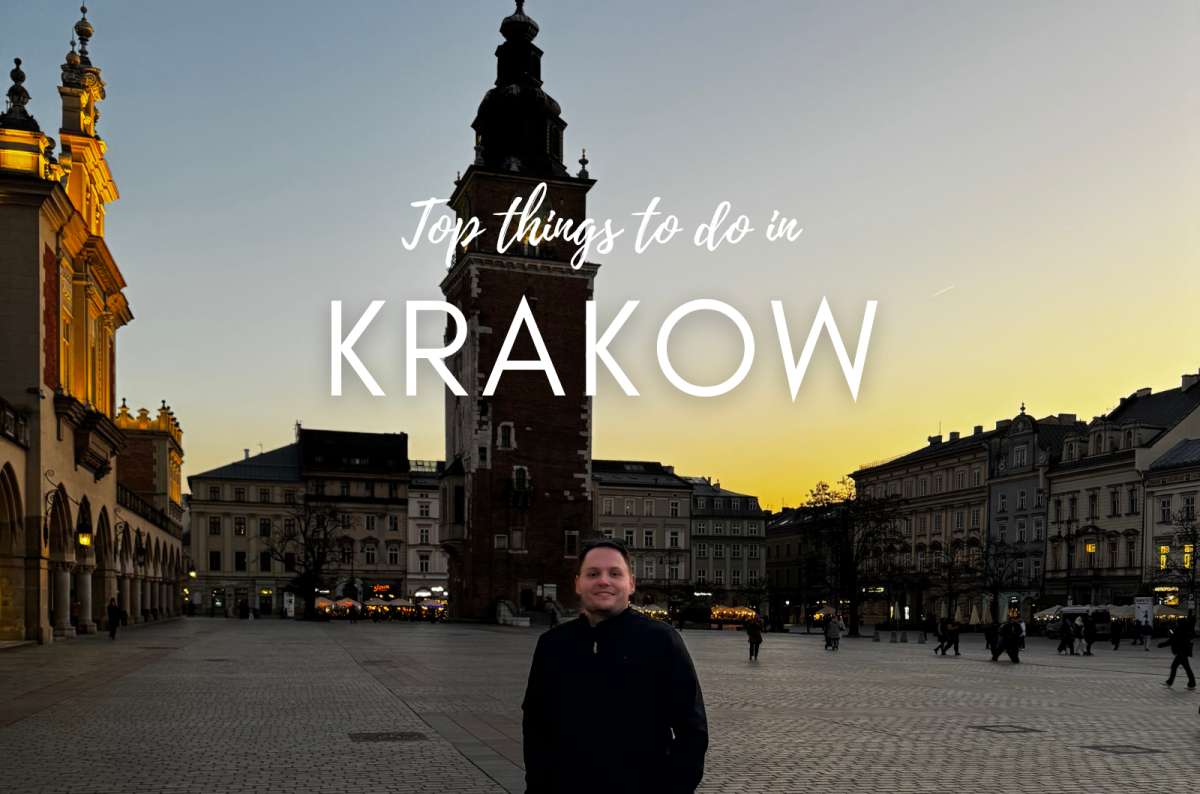
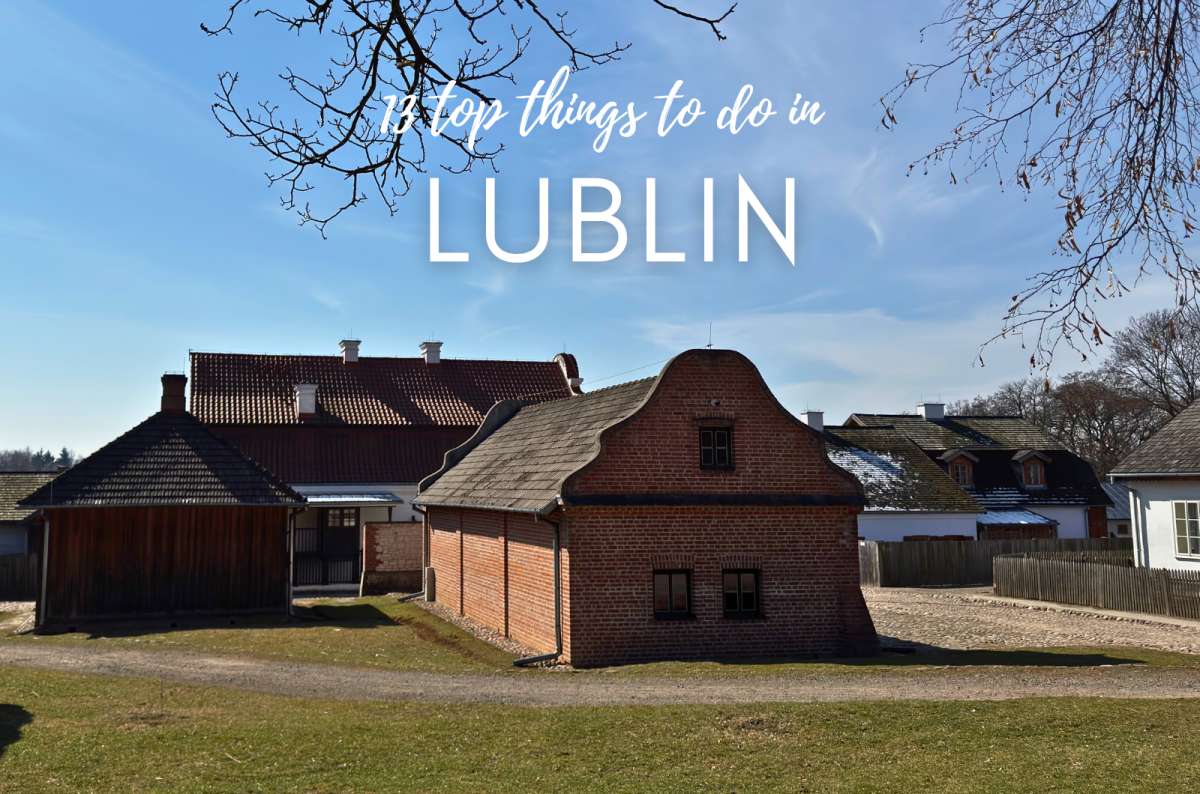



Comments | Thoughts? Give us a shout!